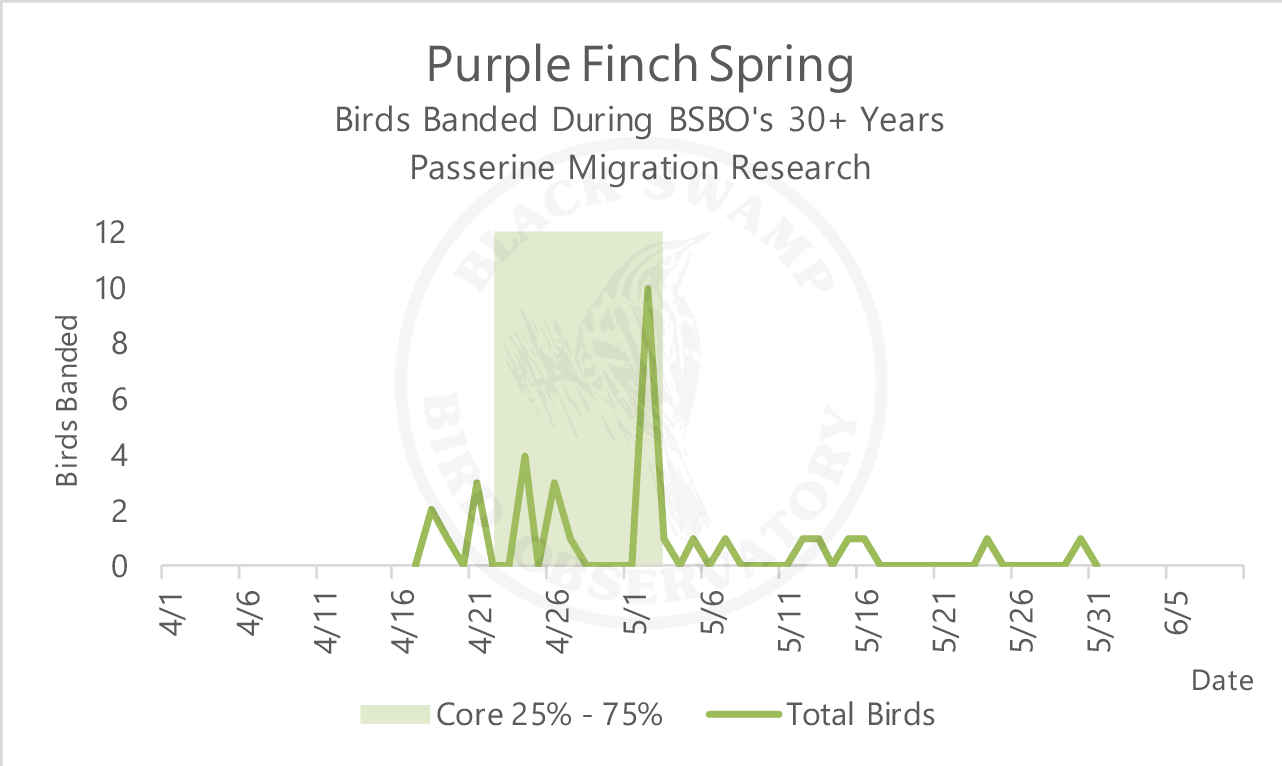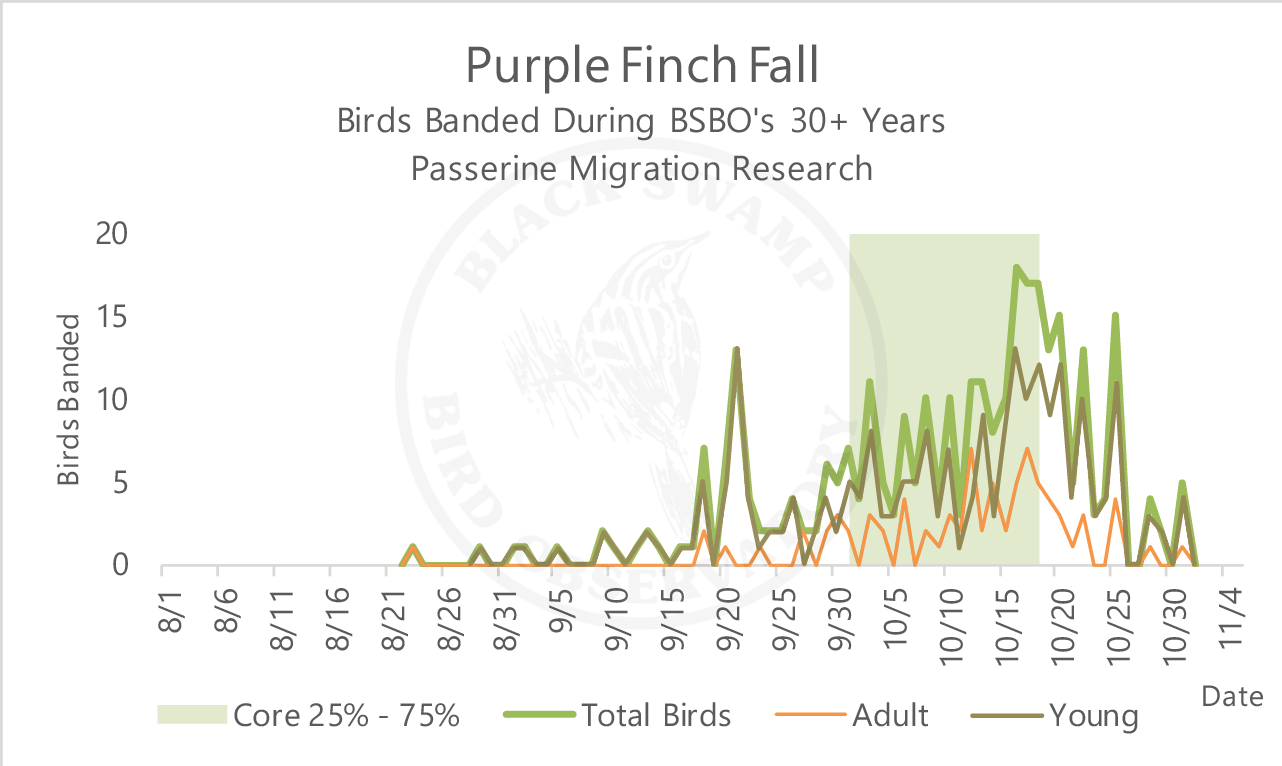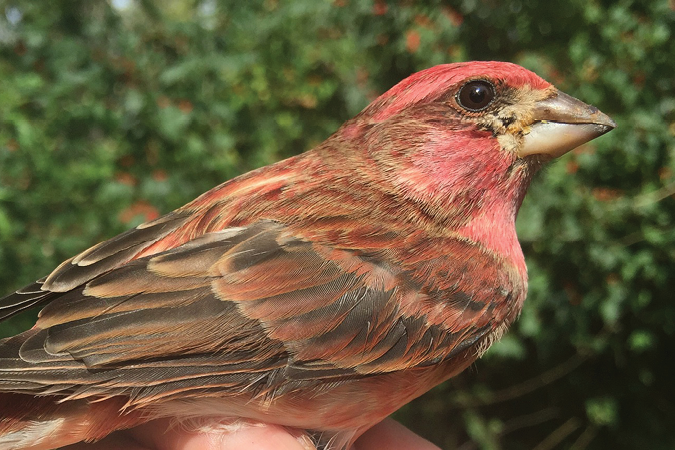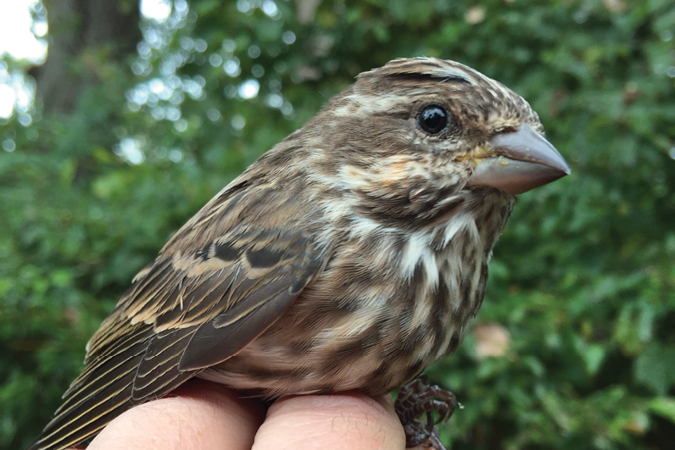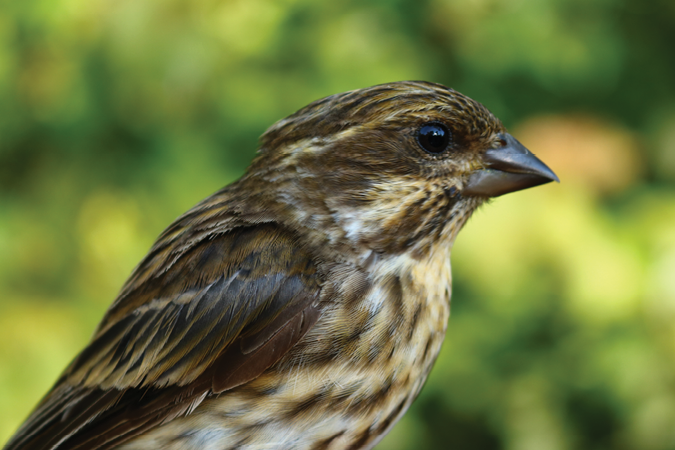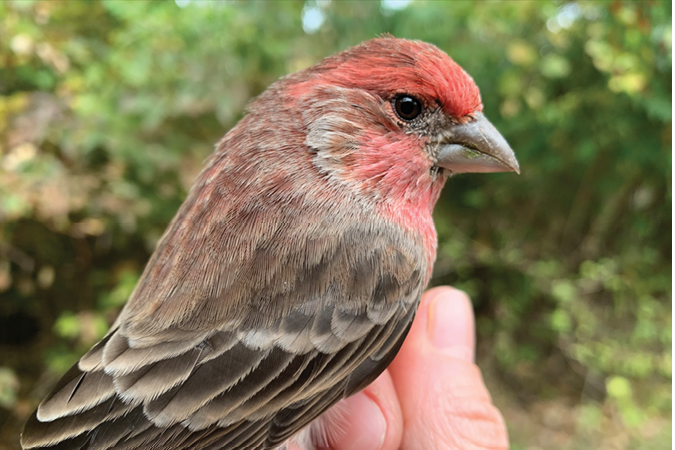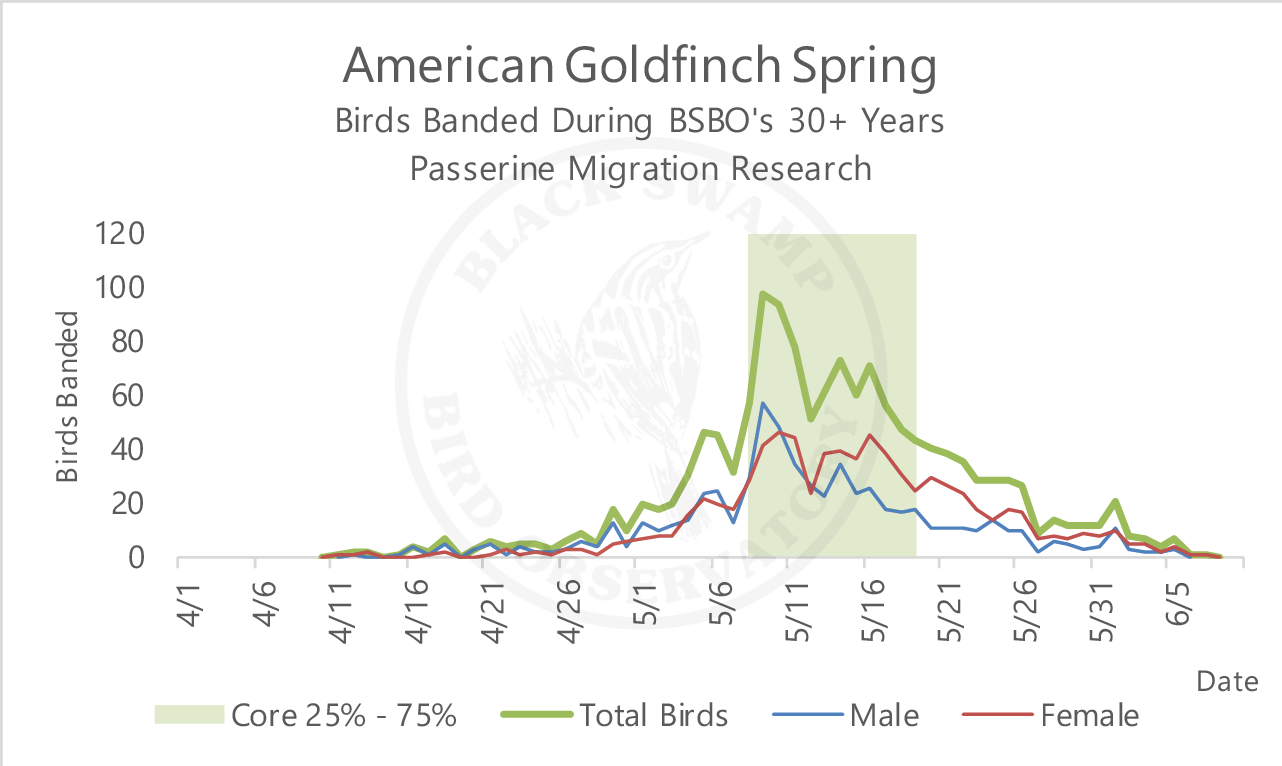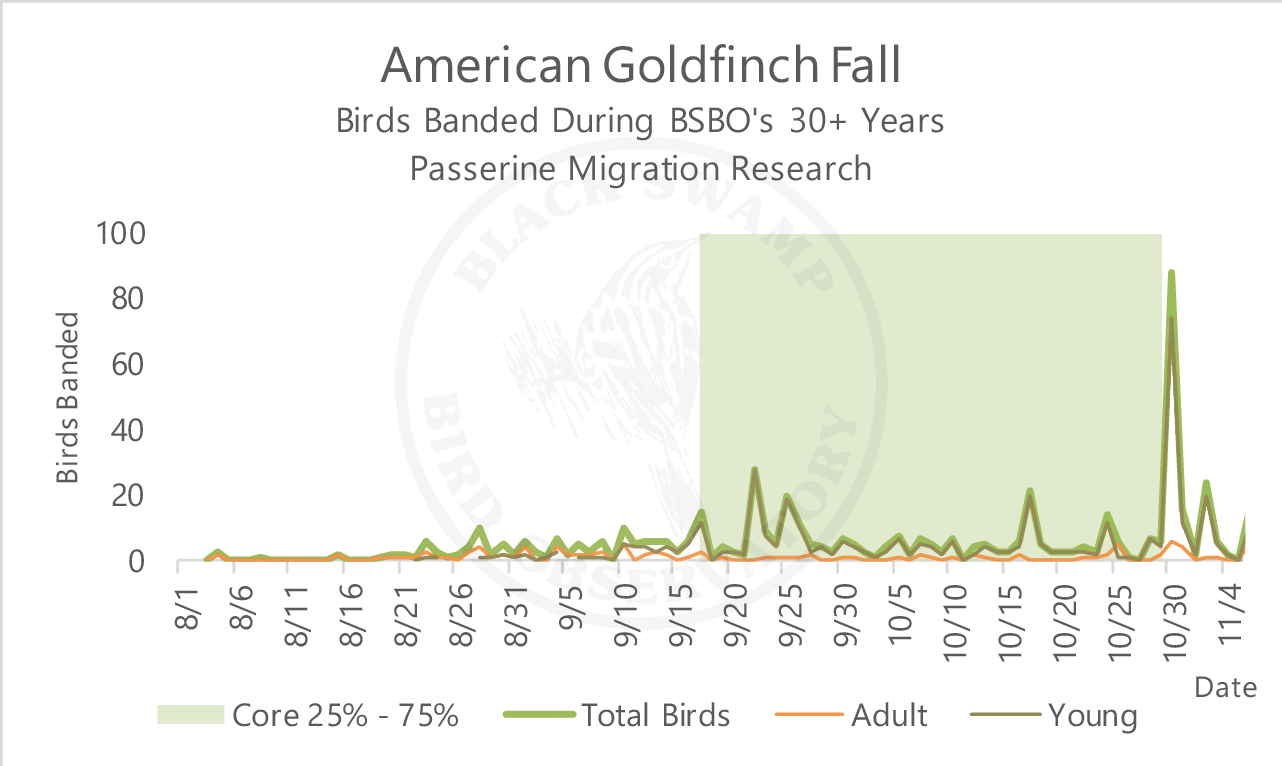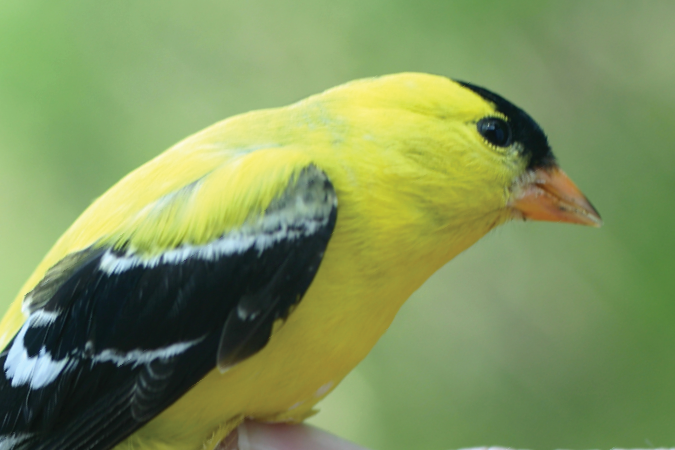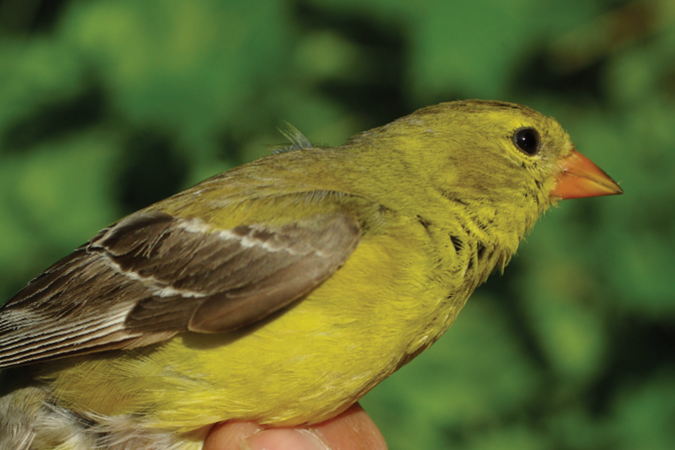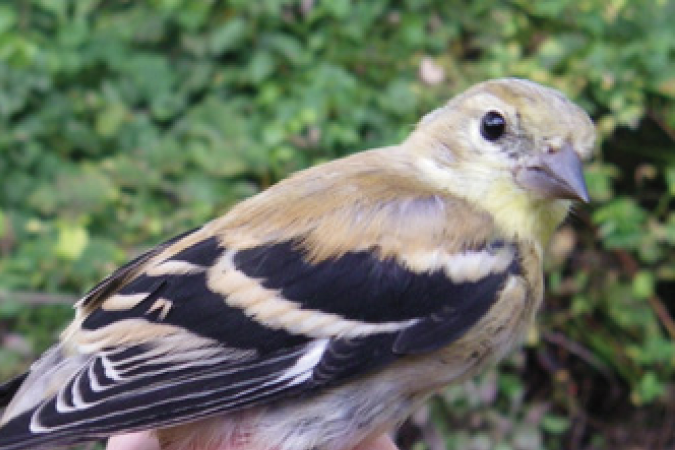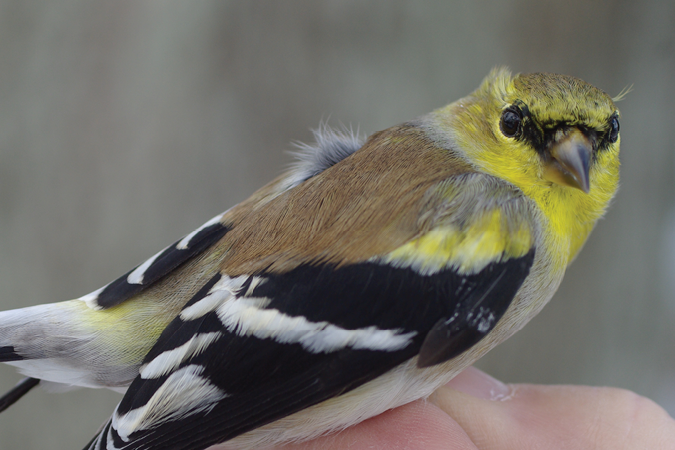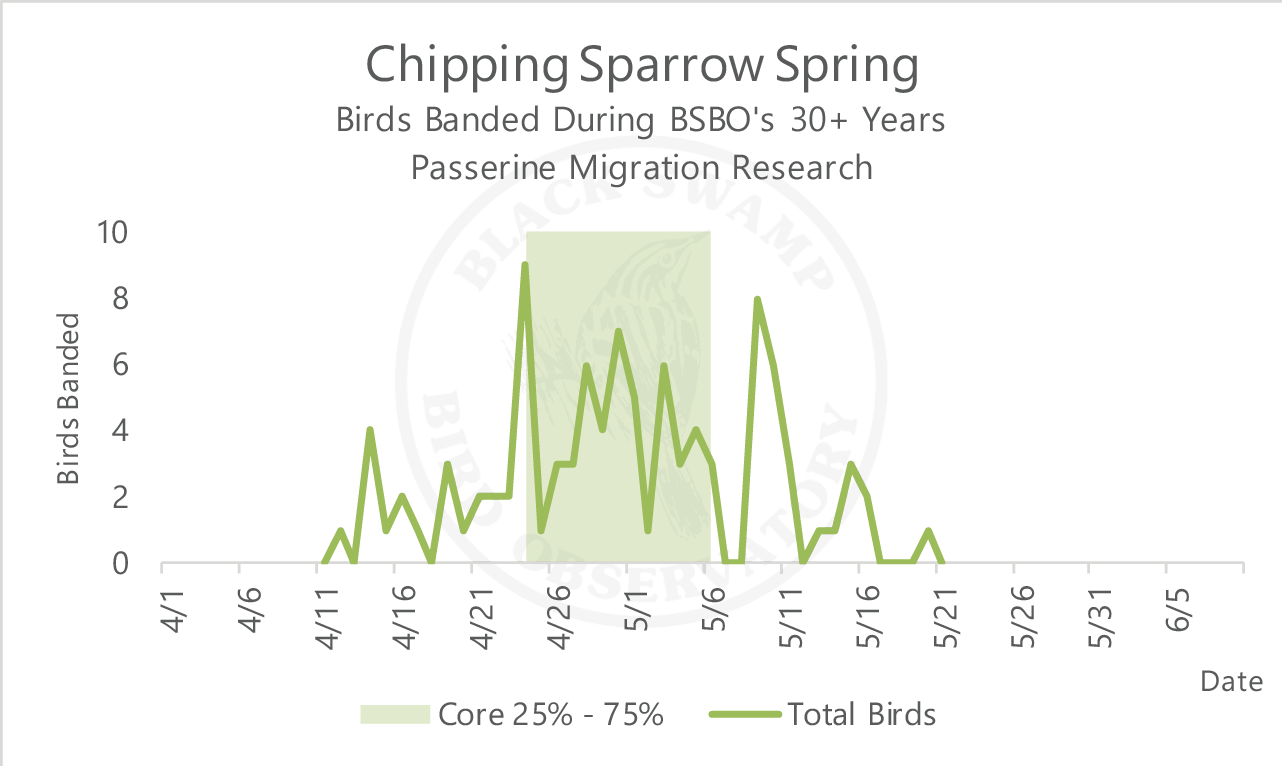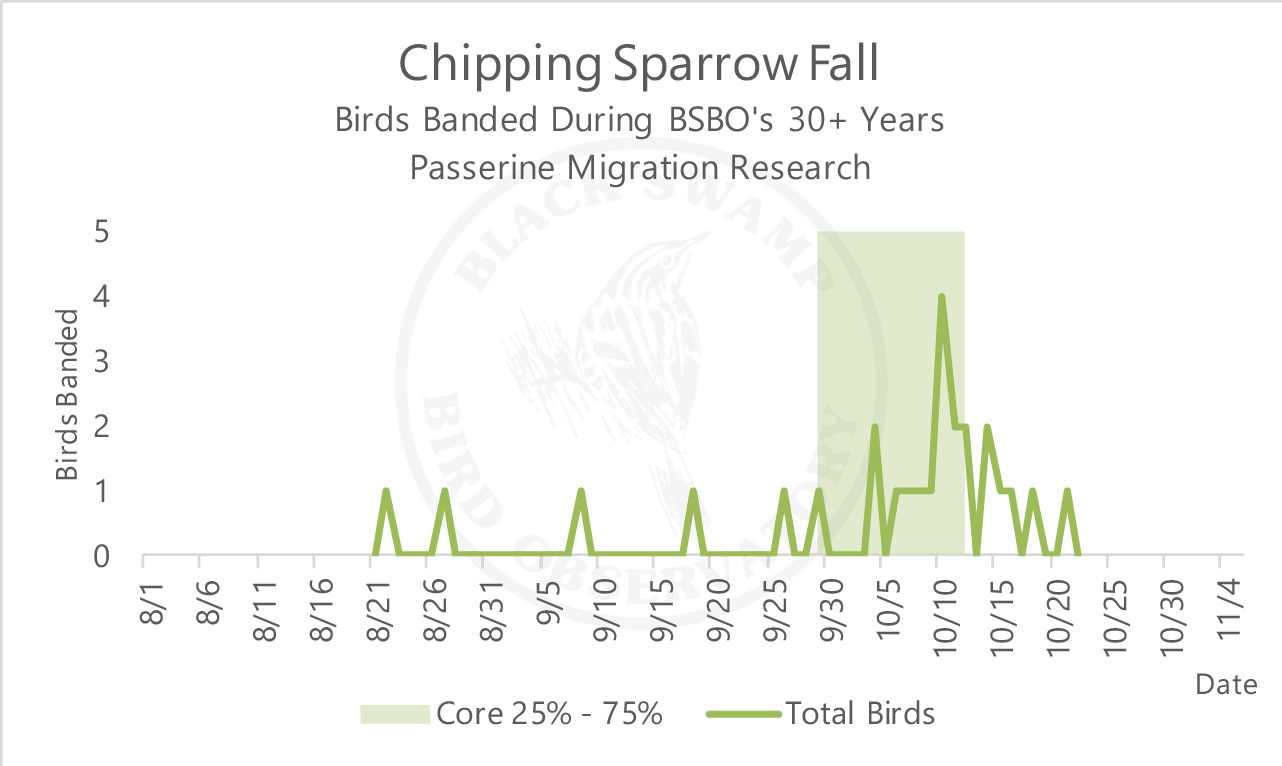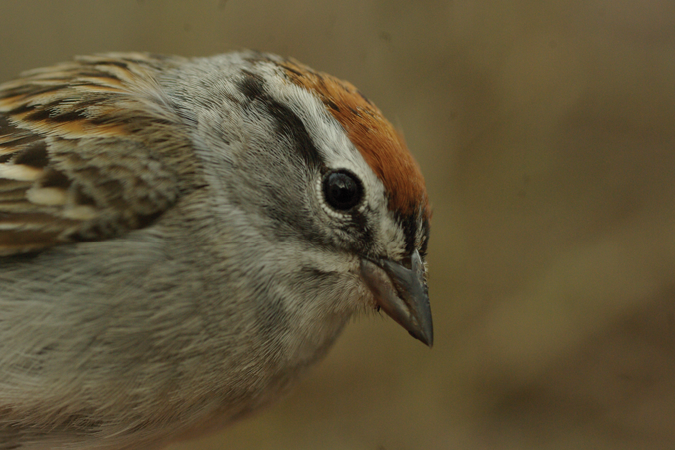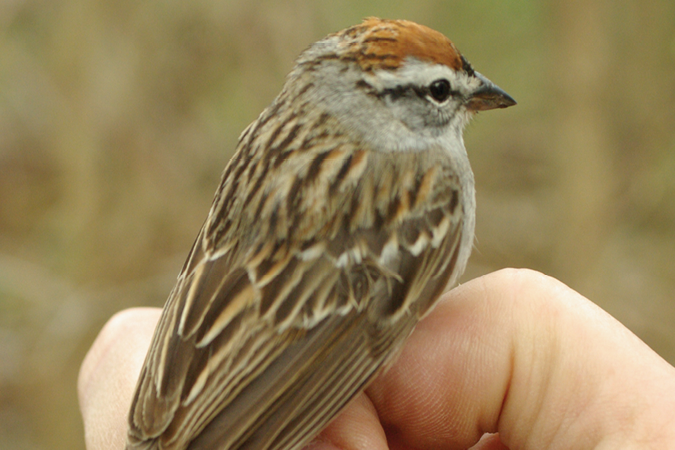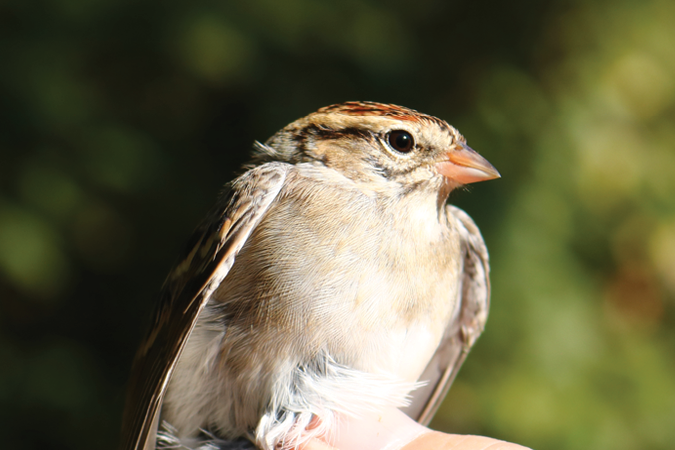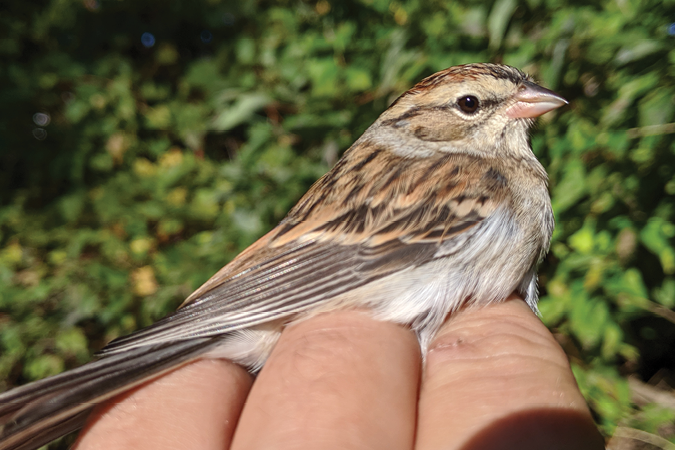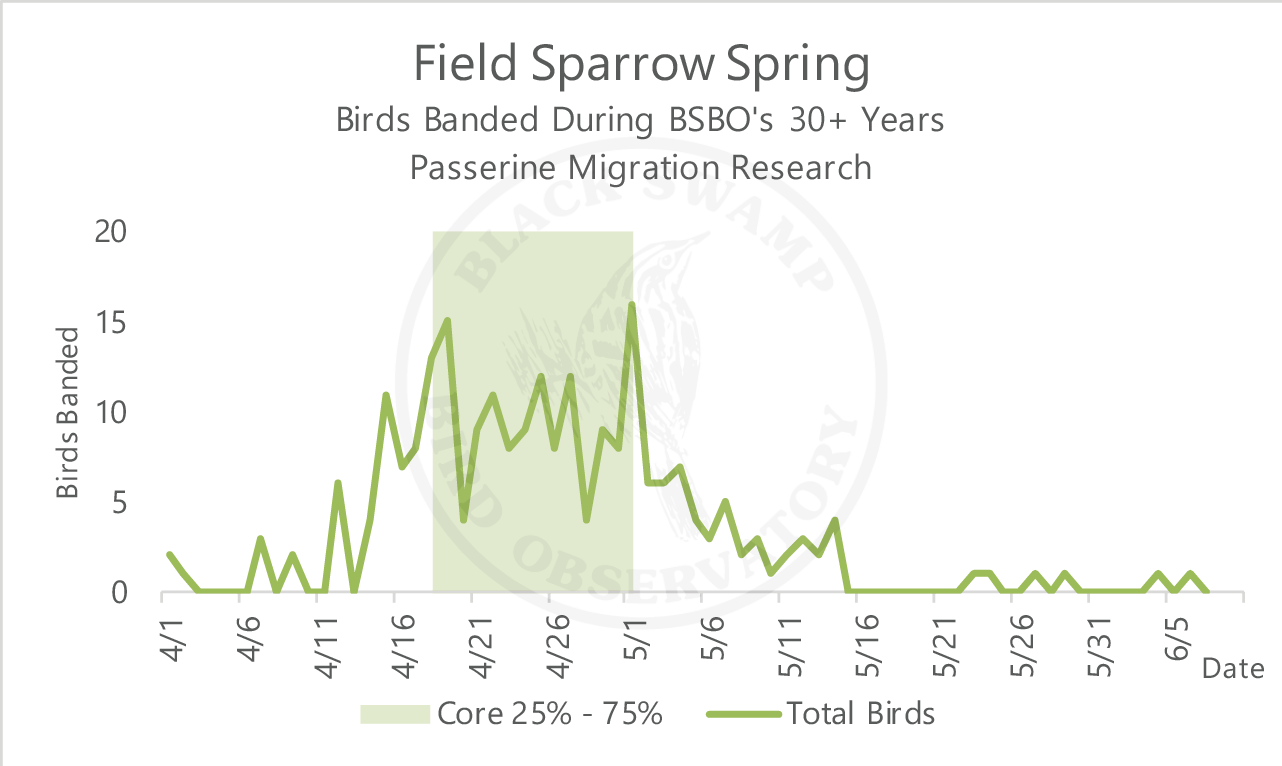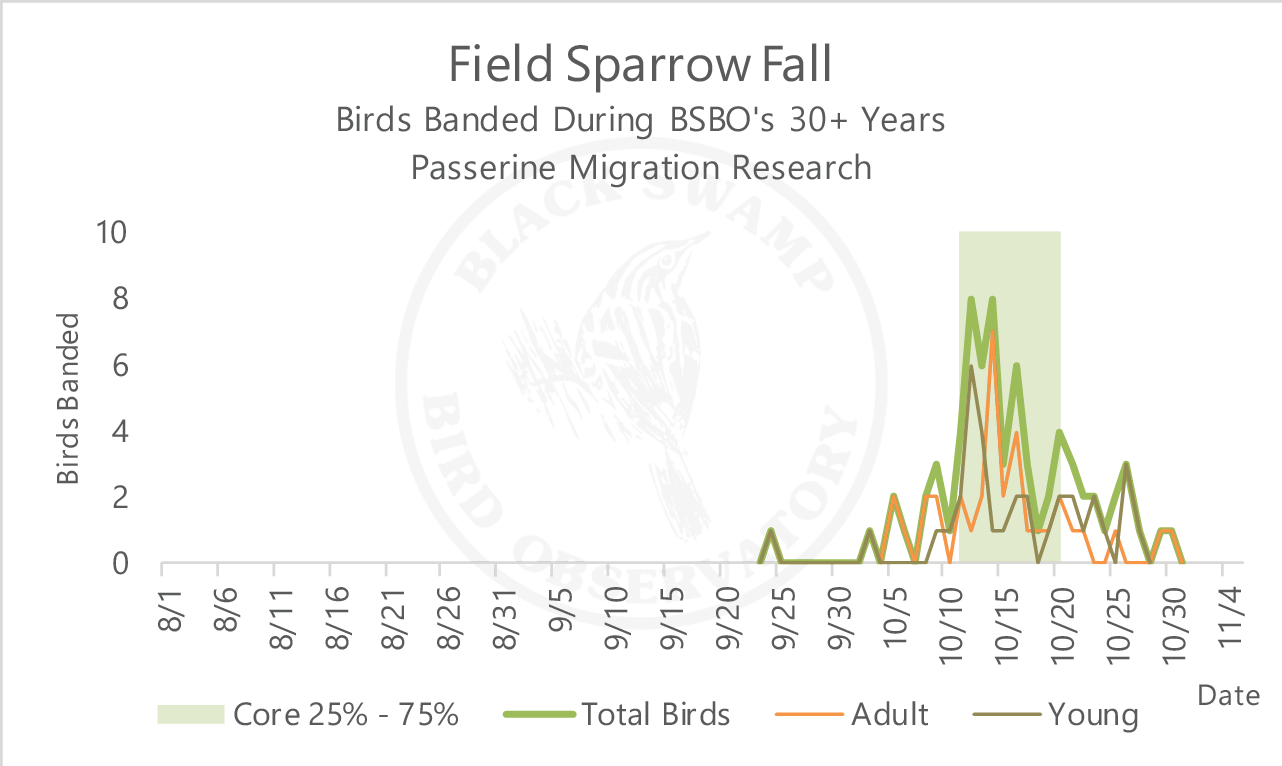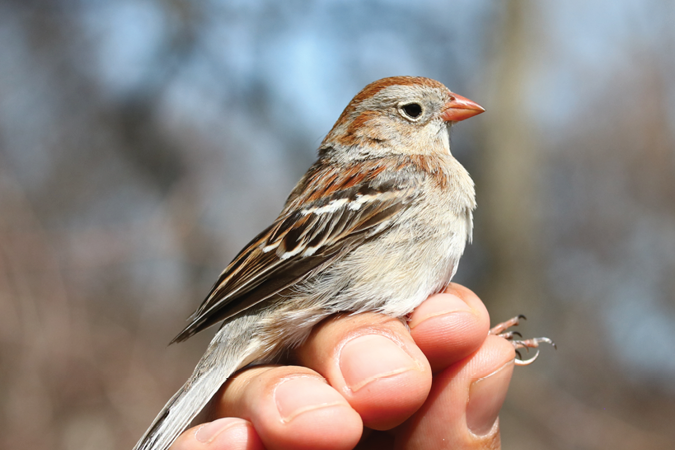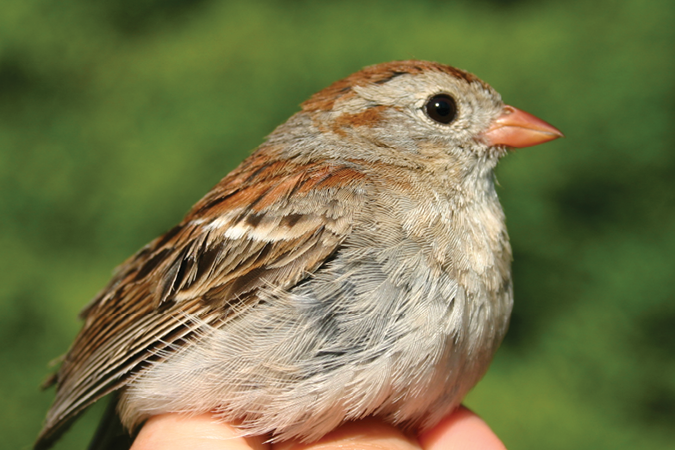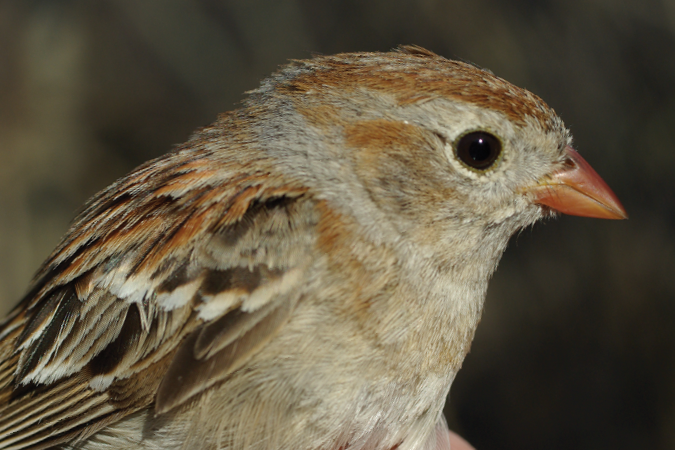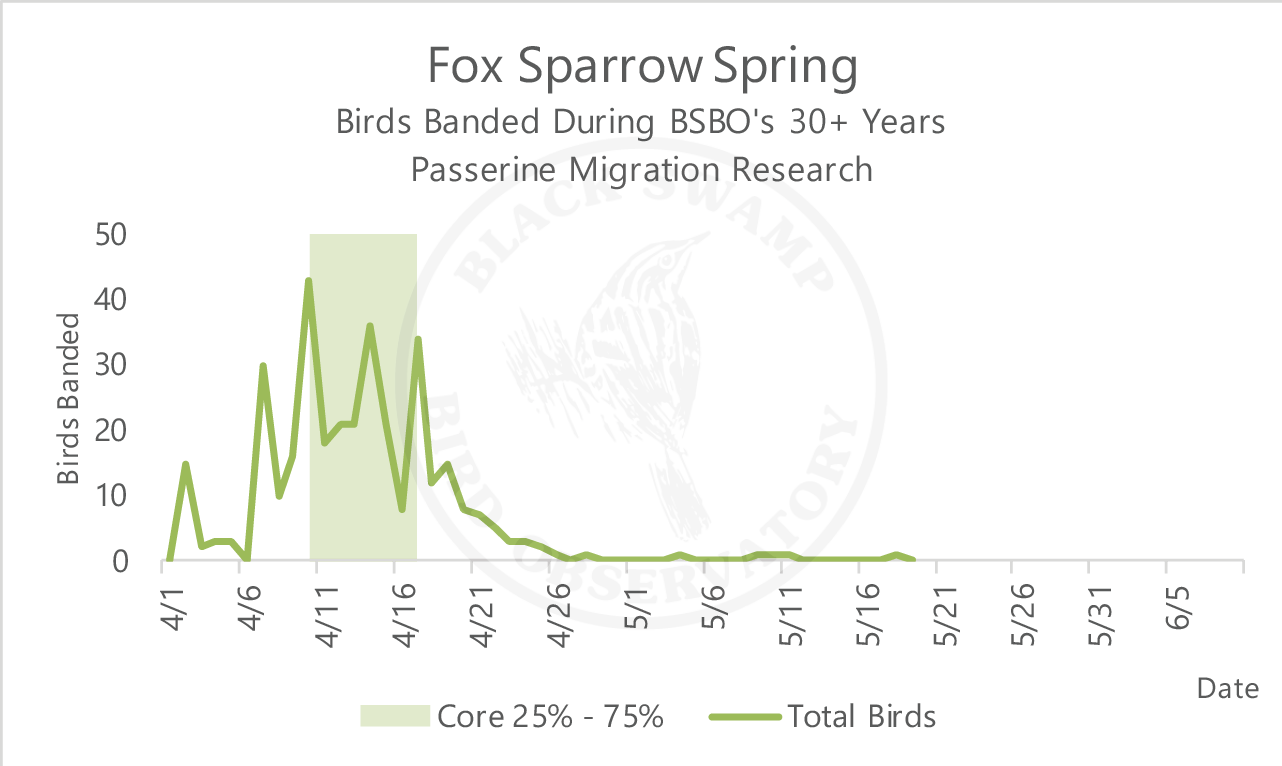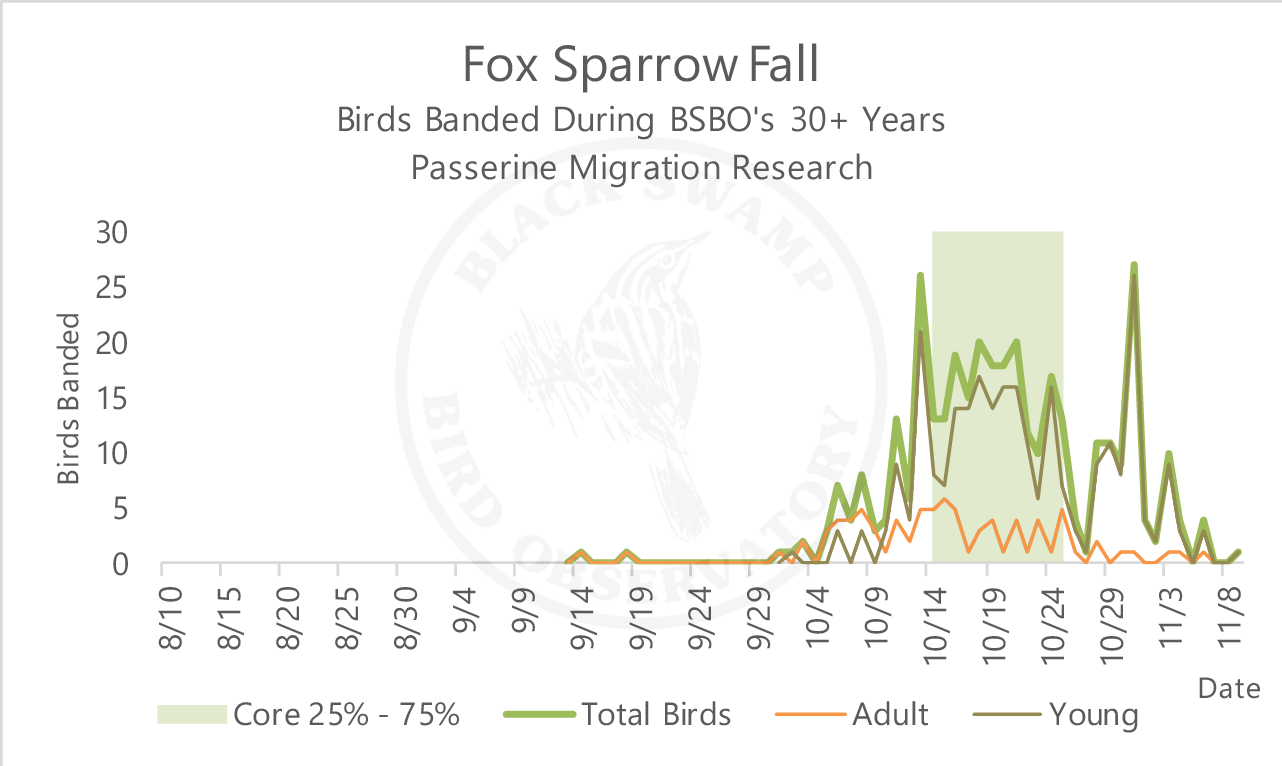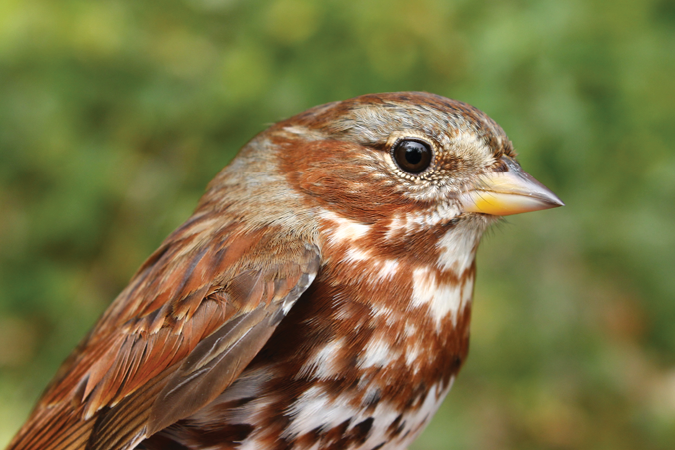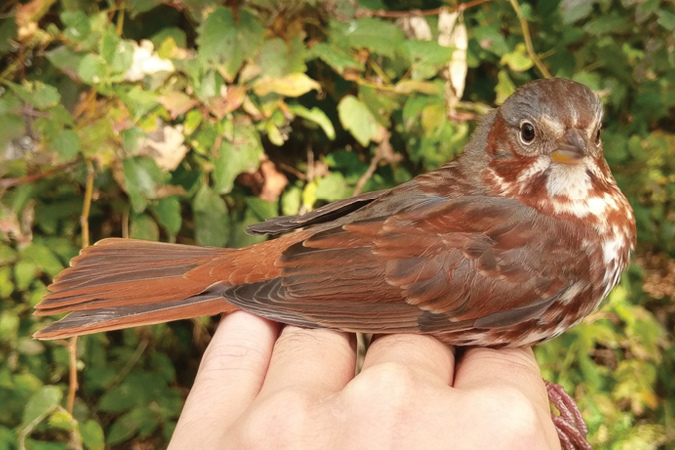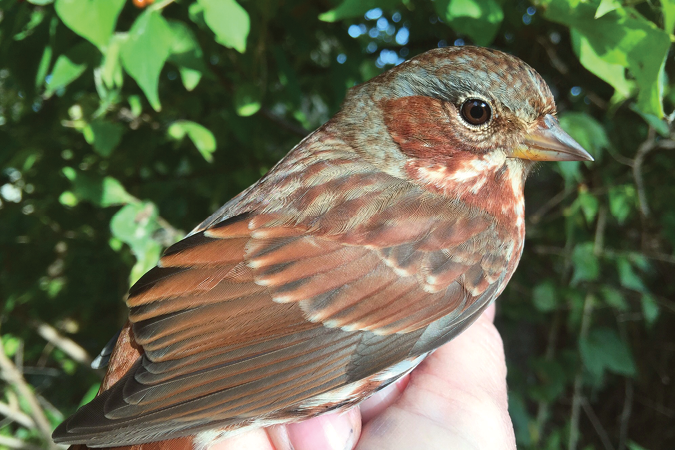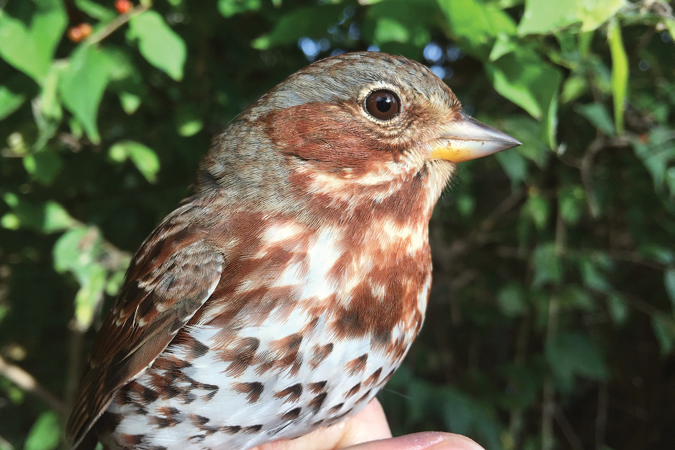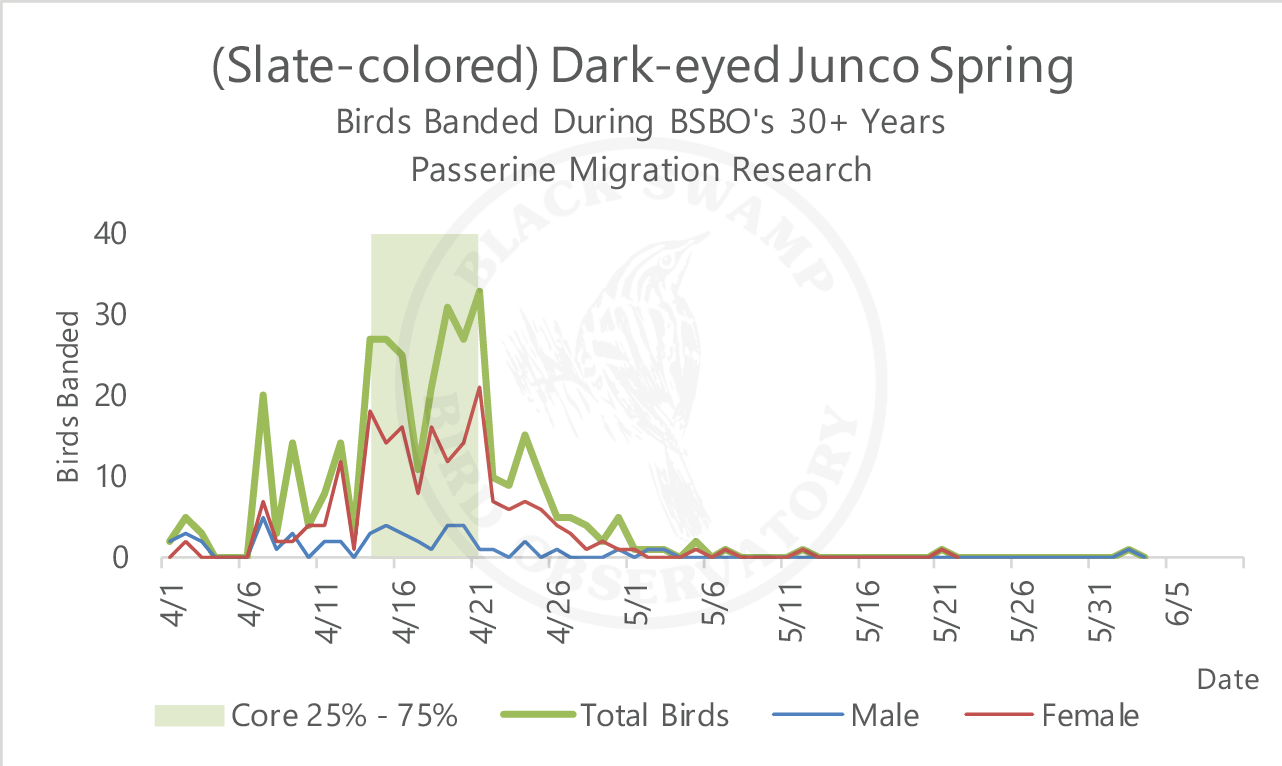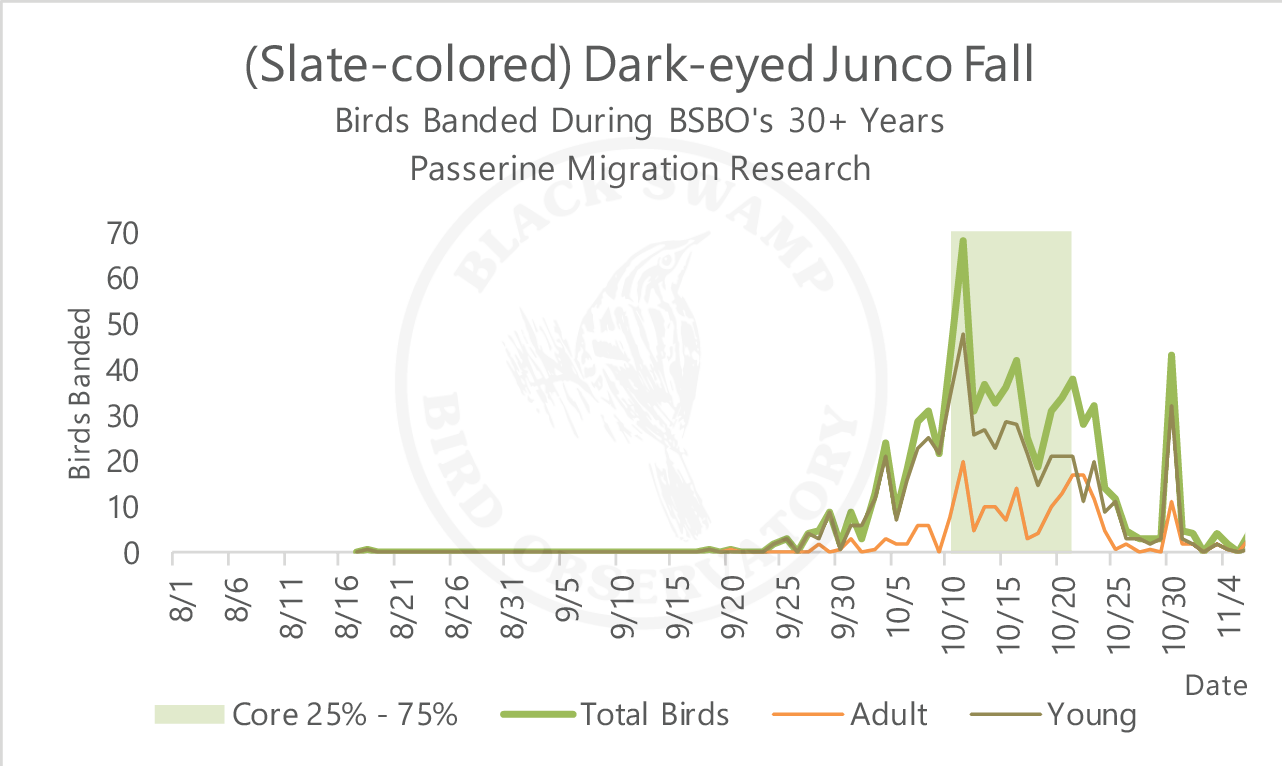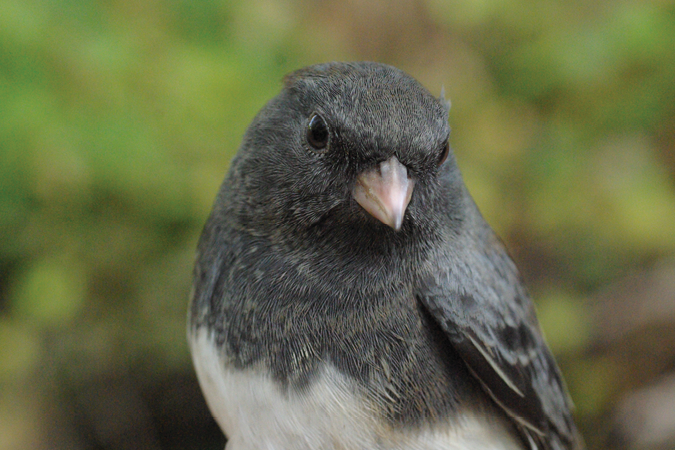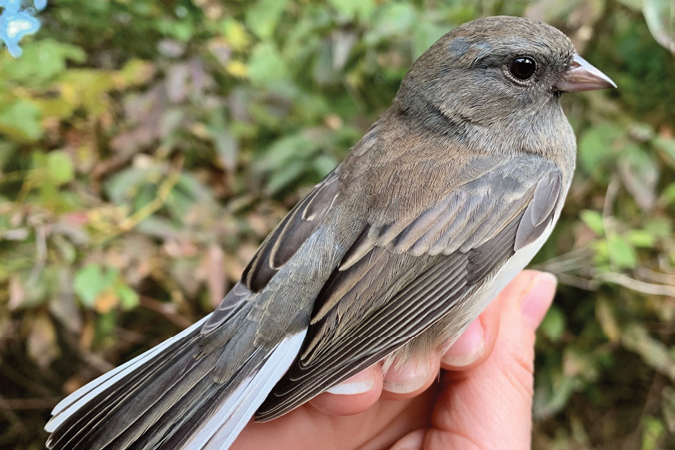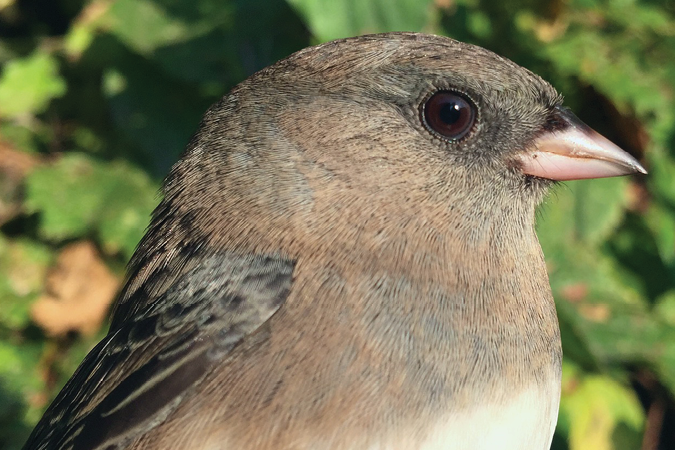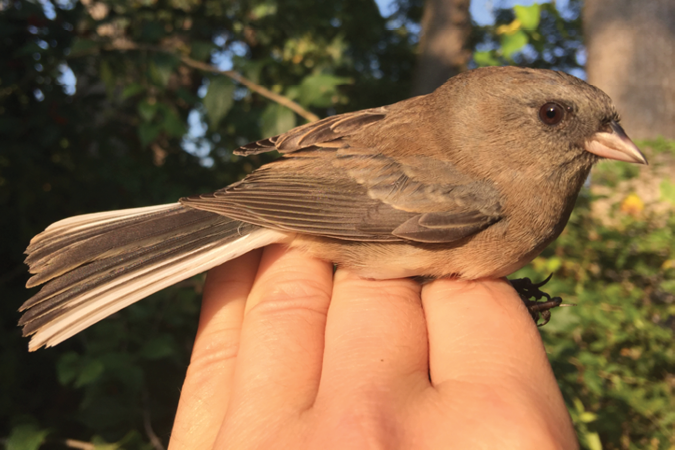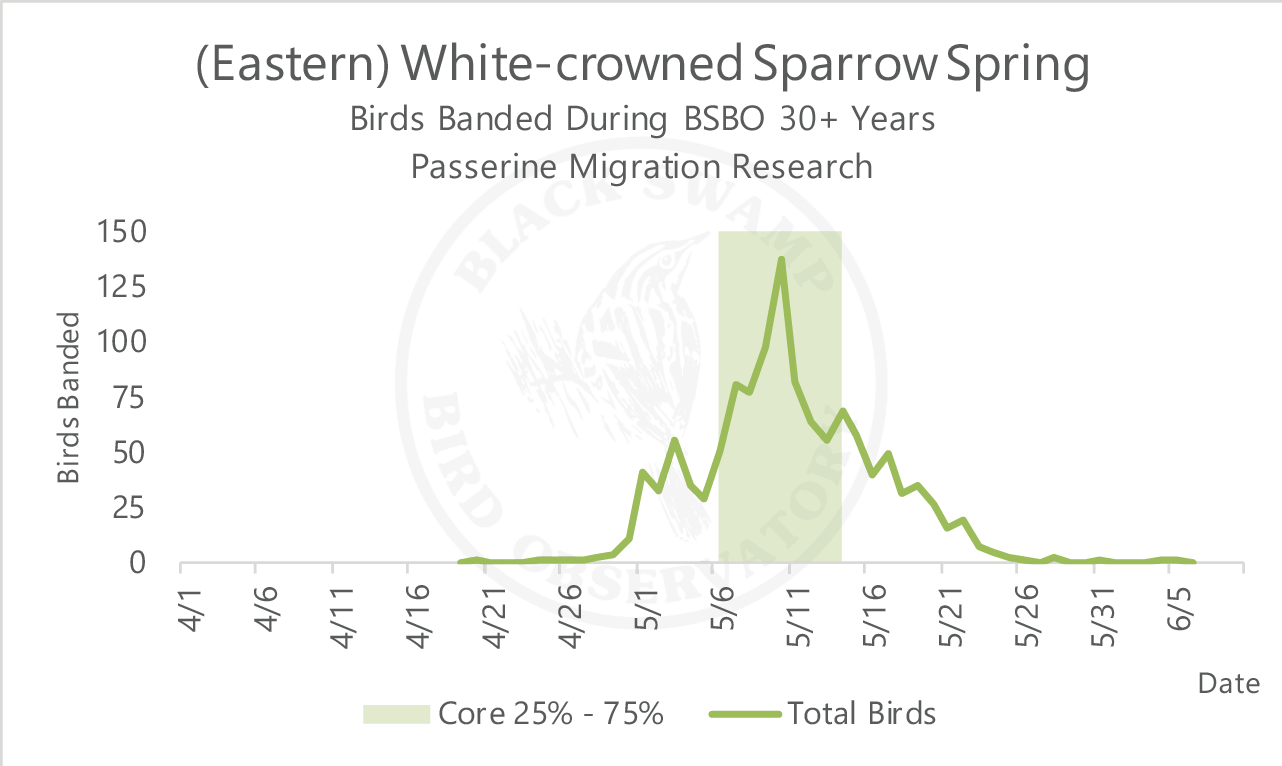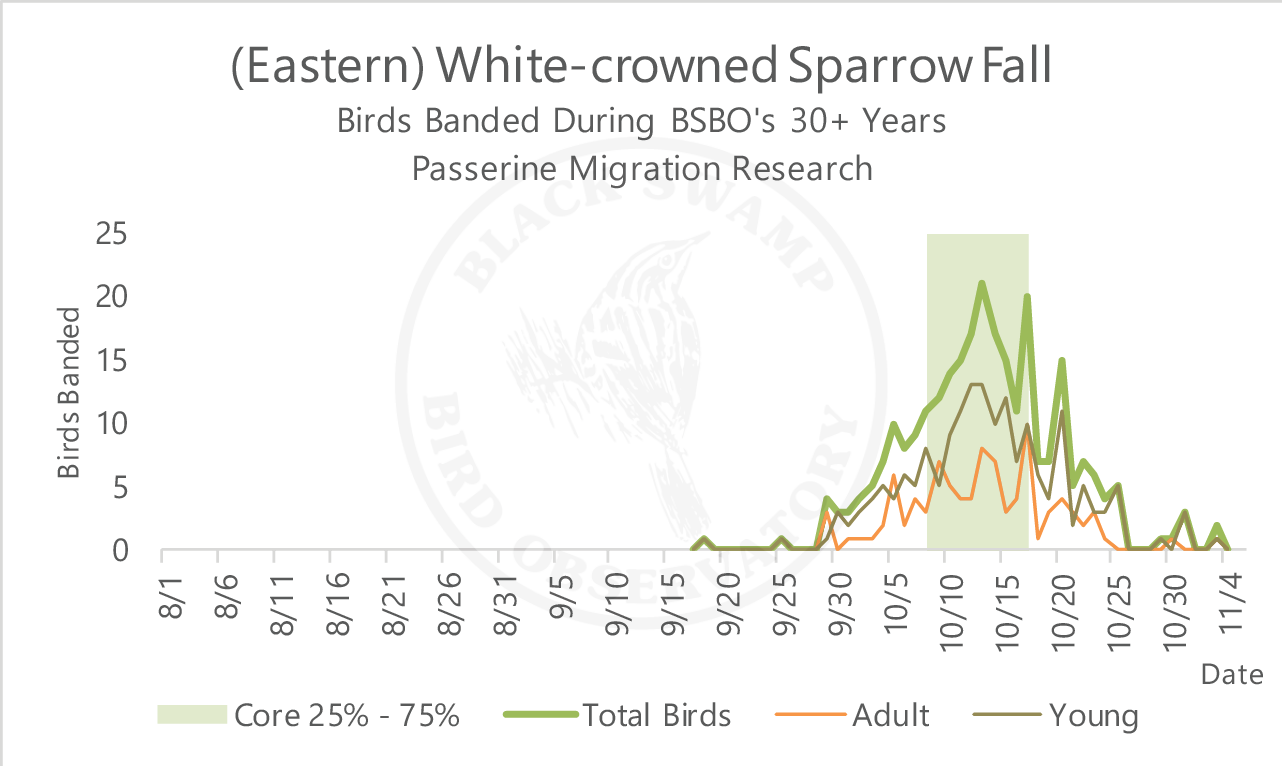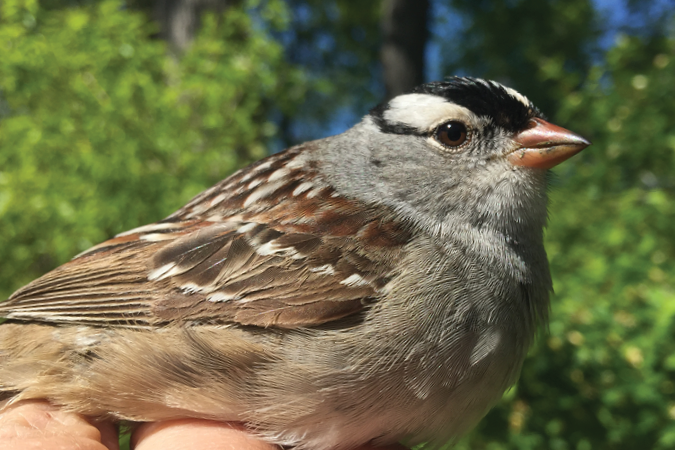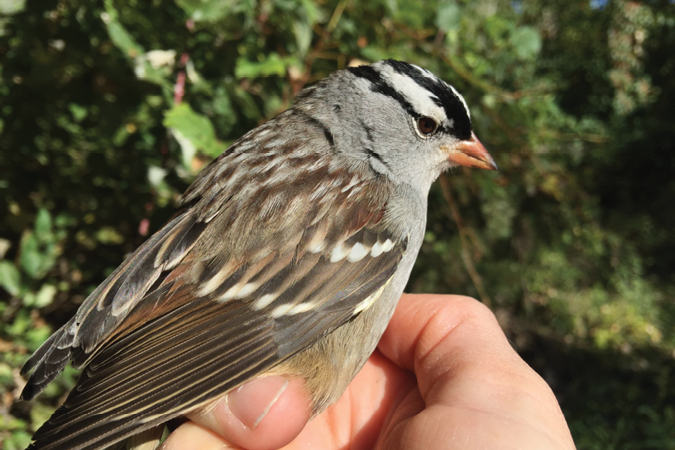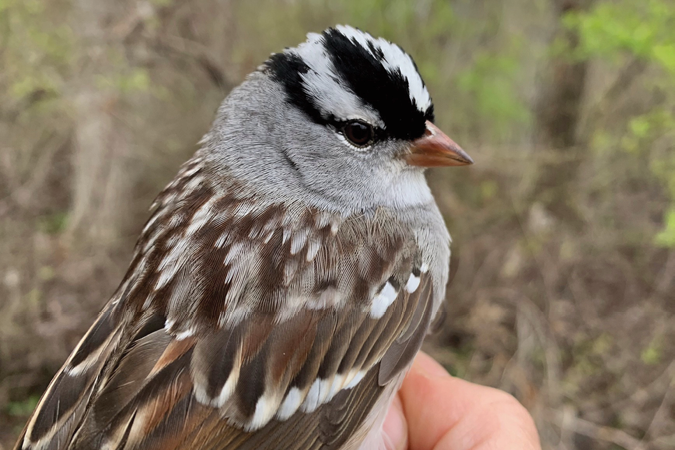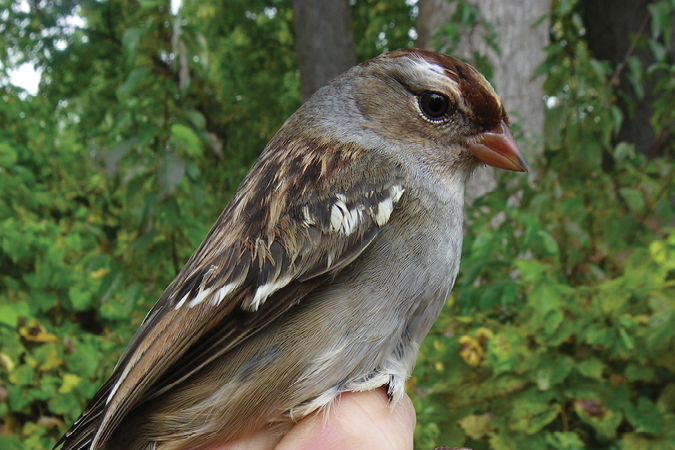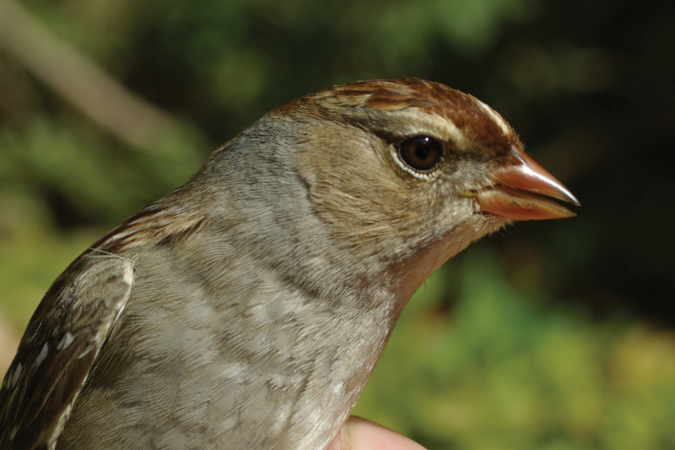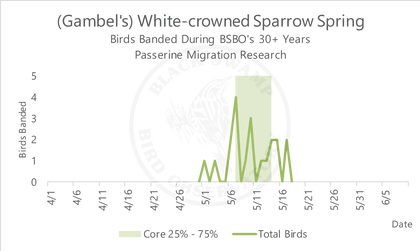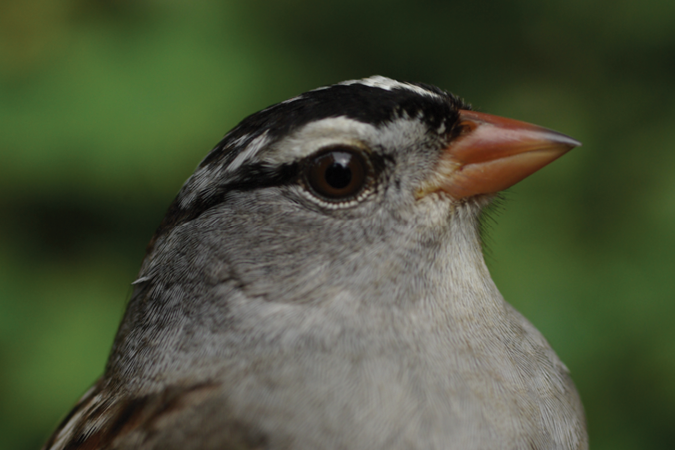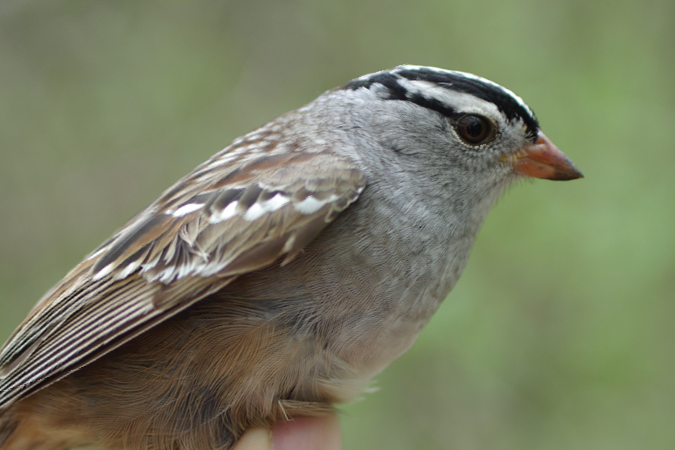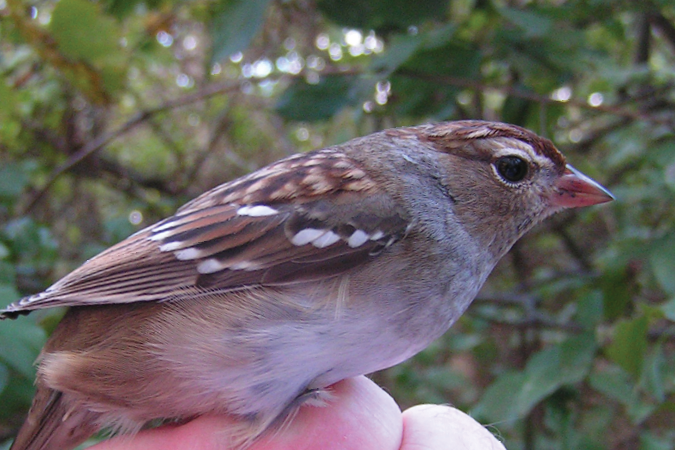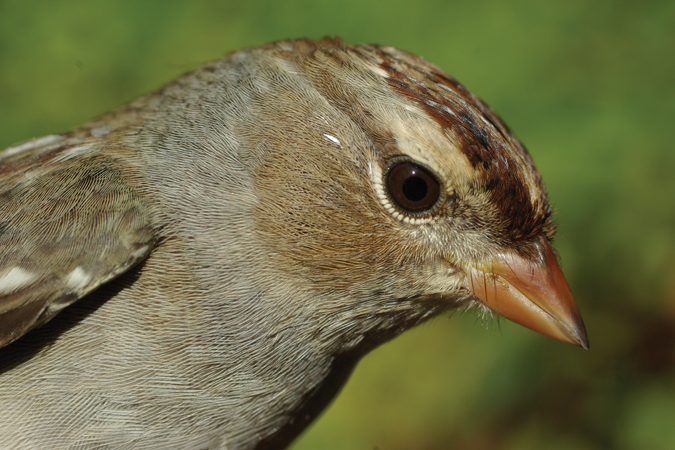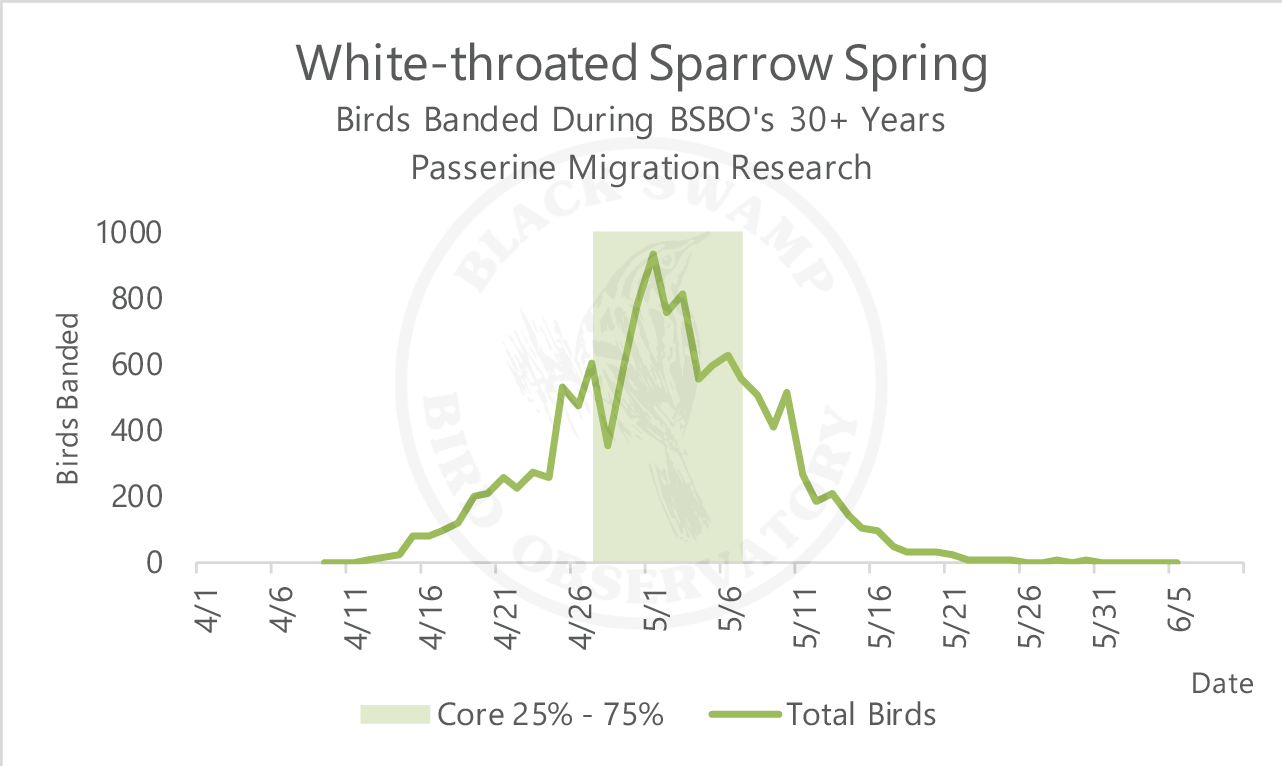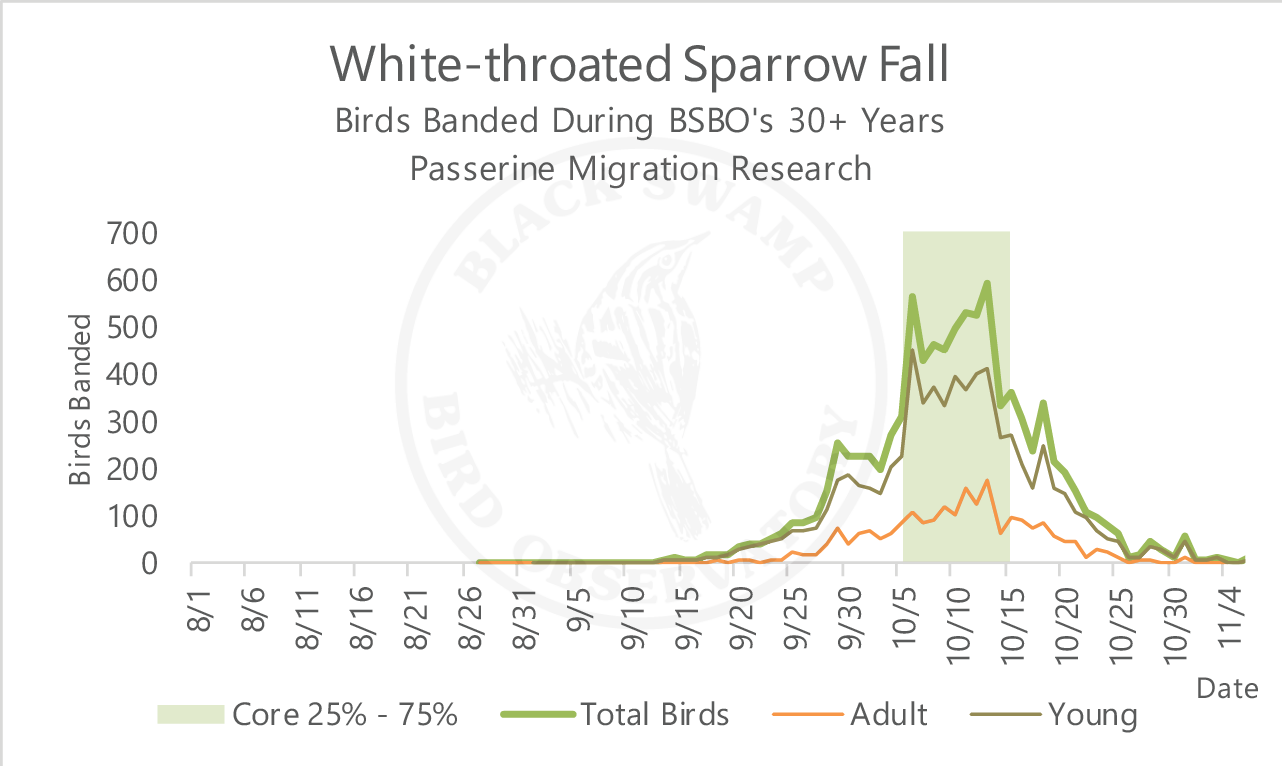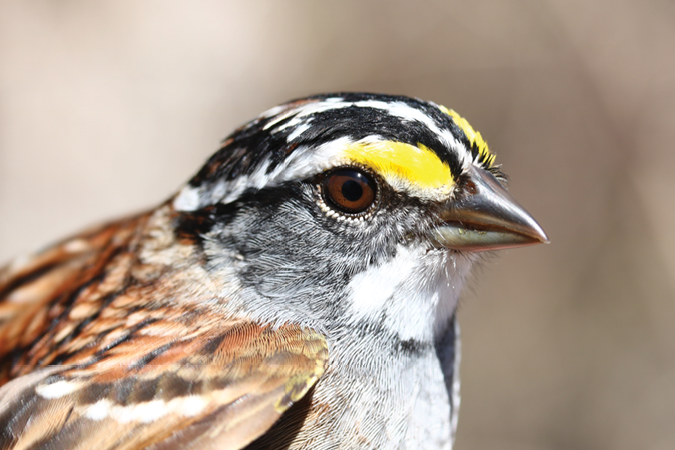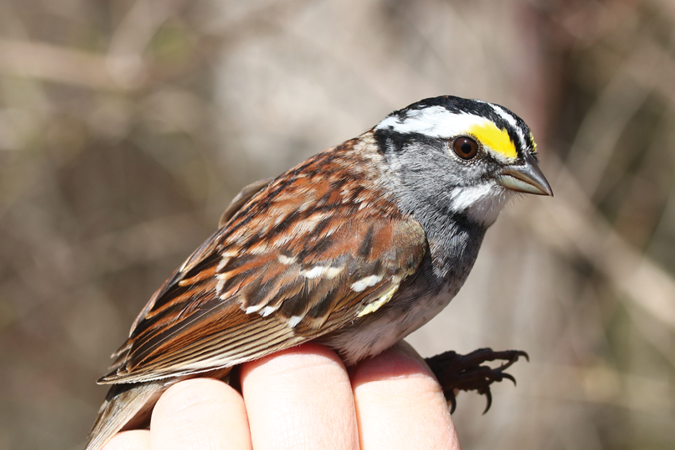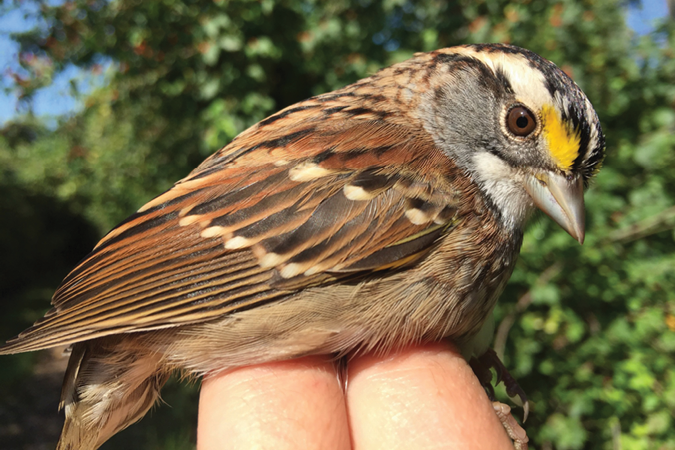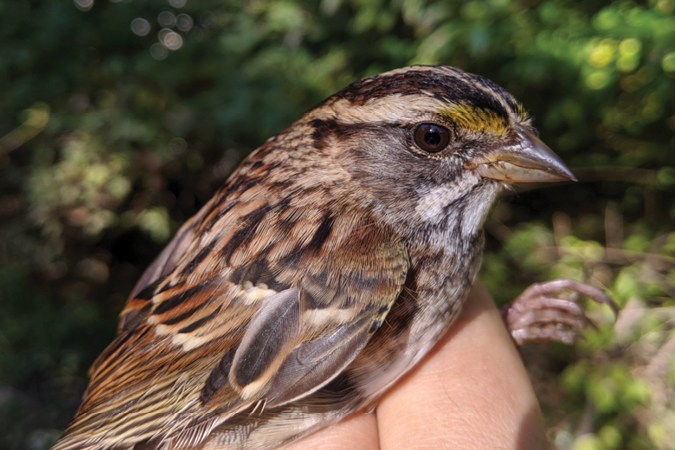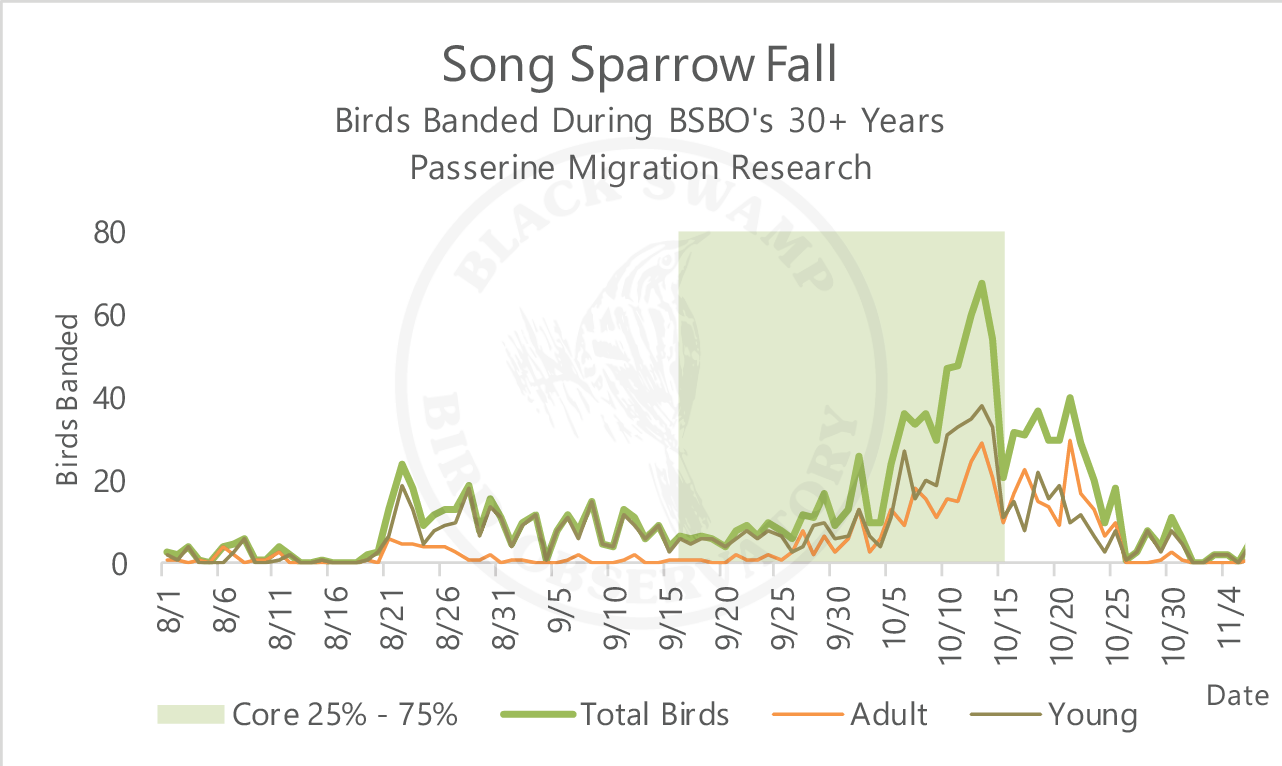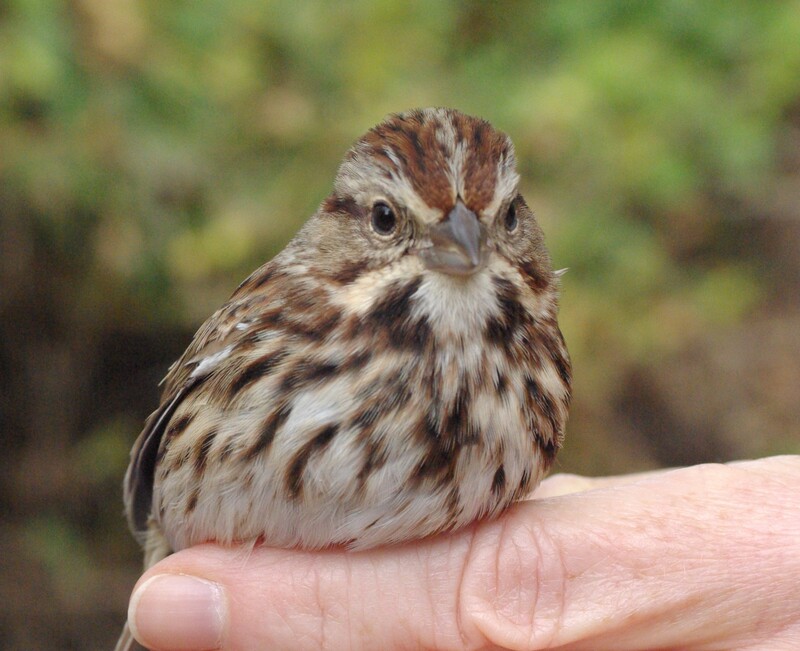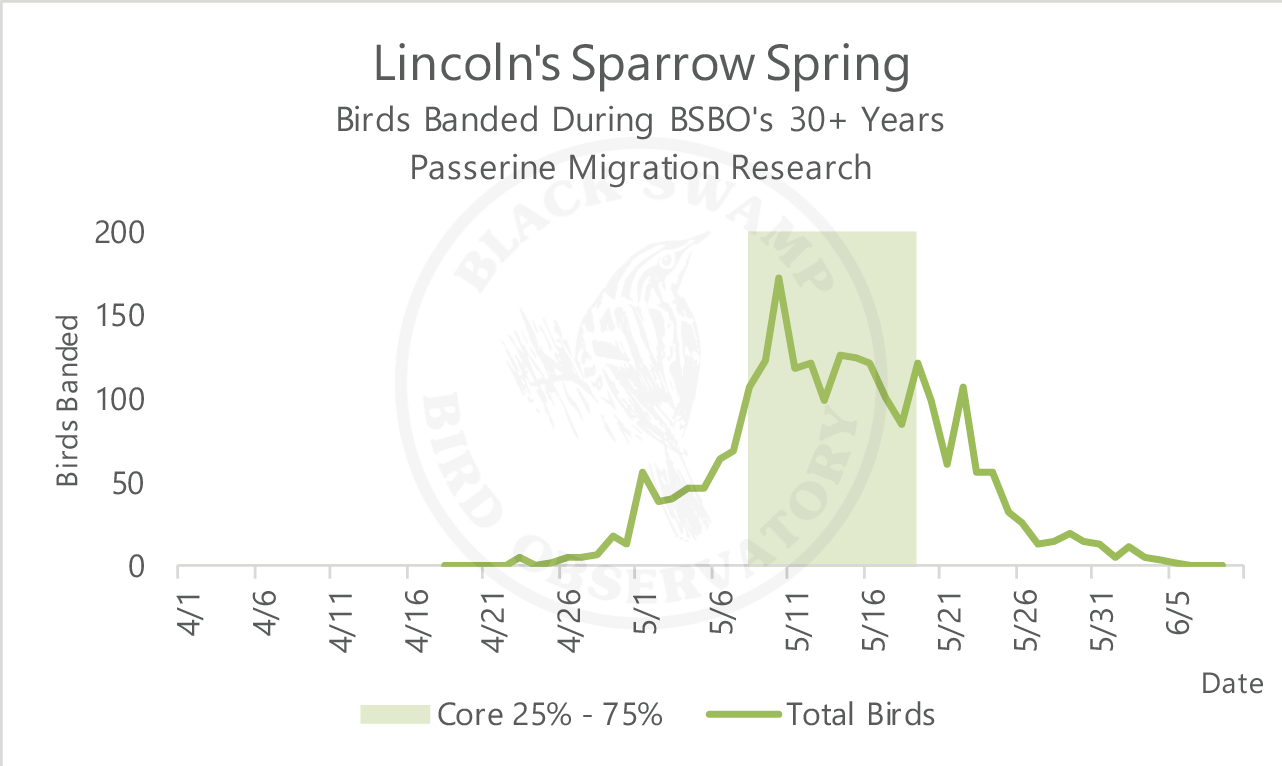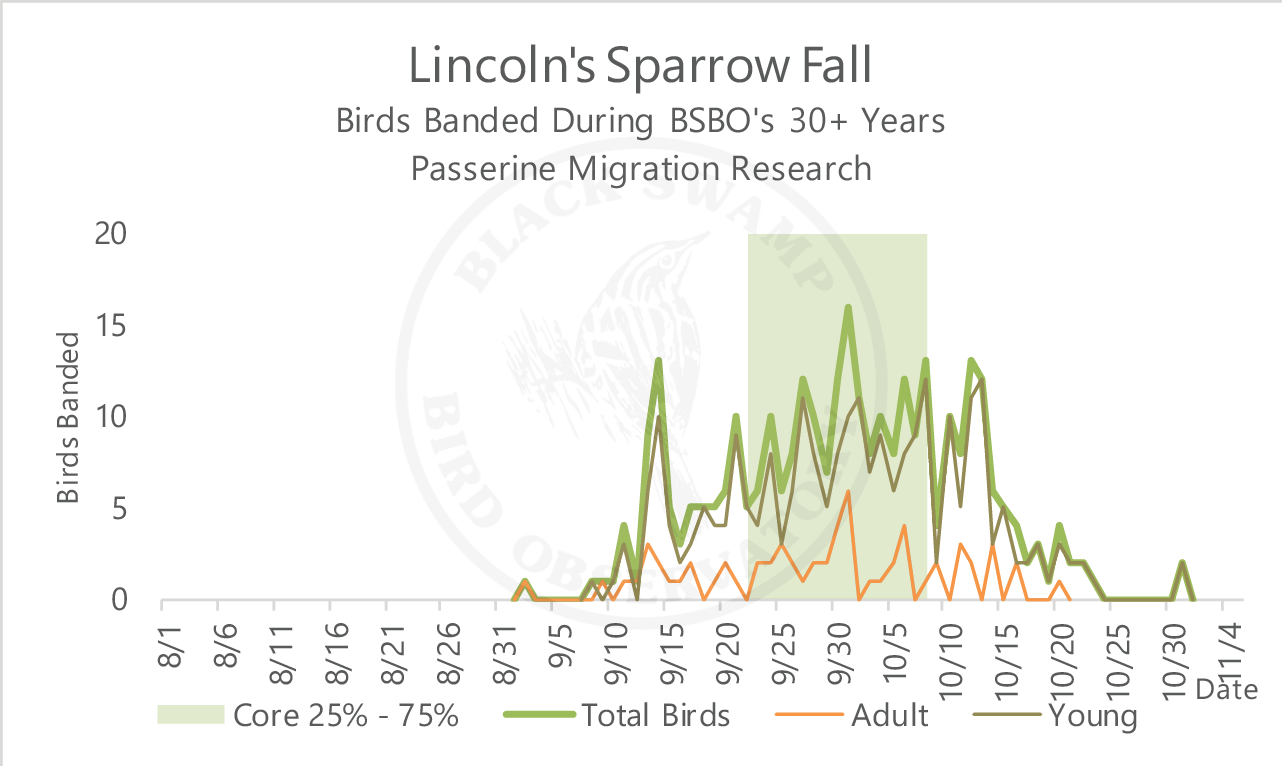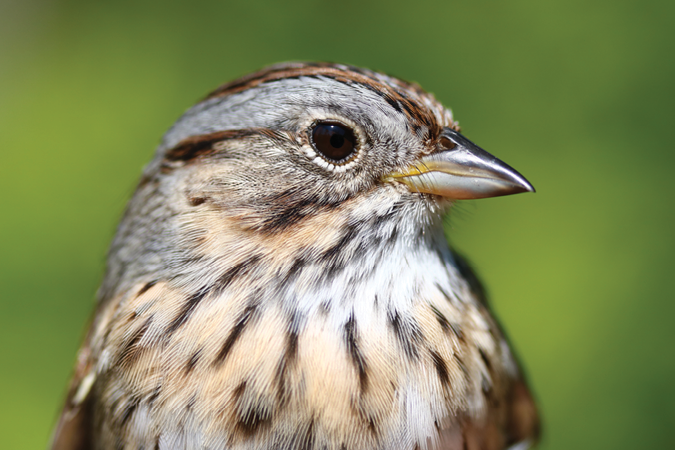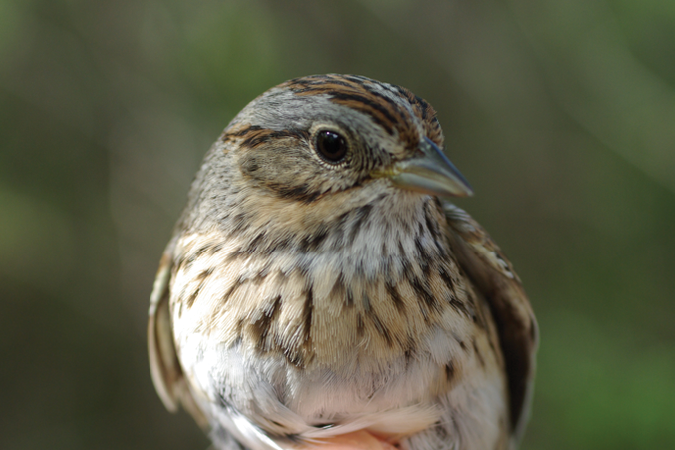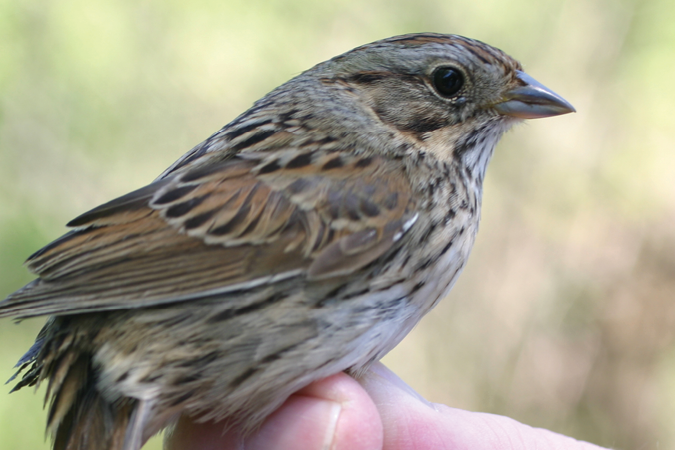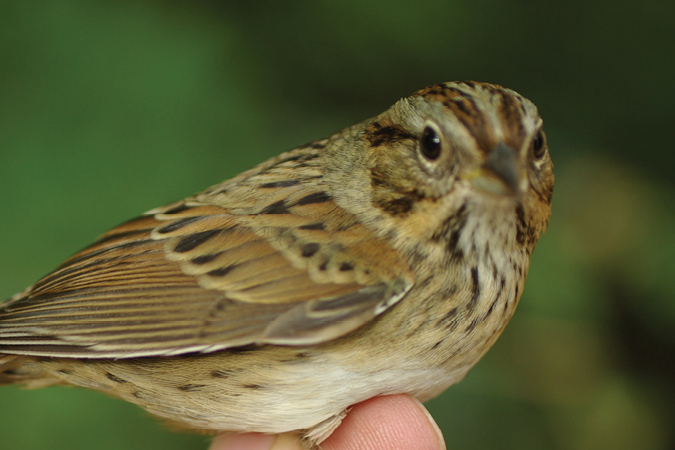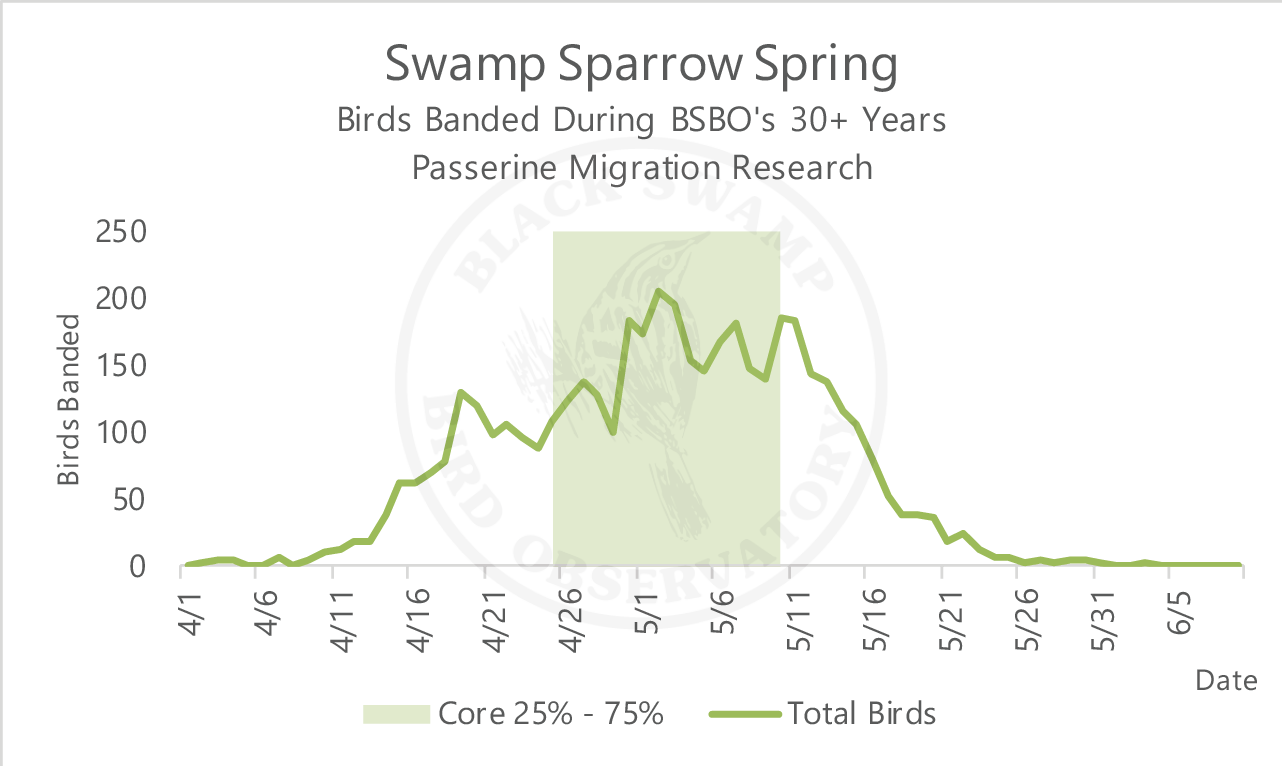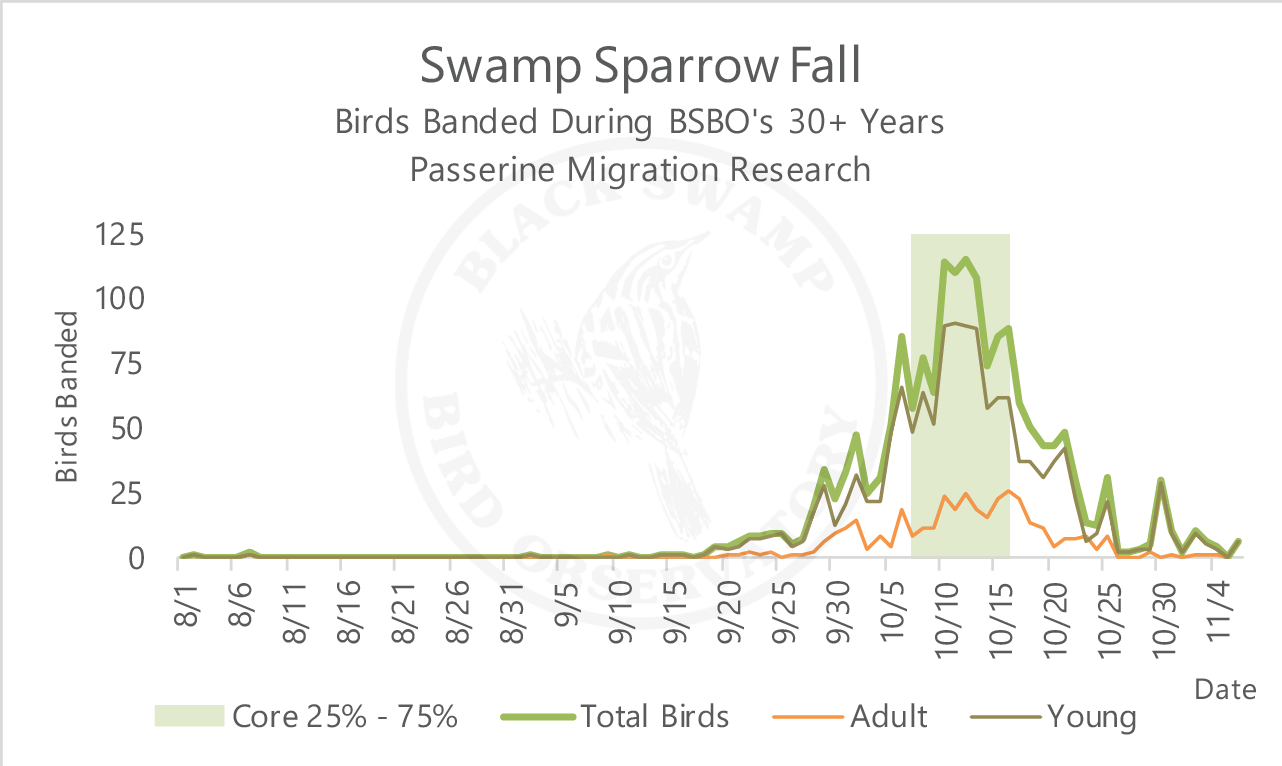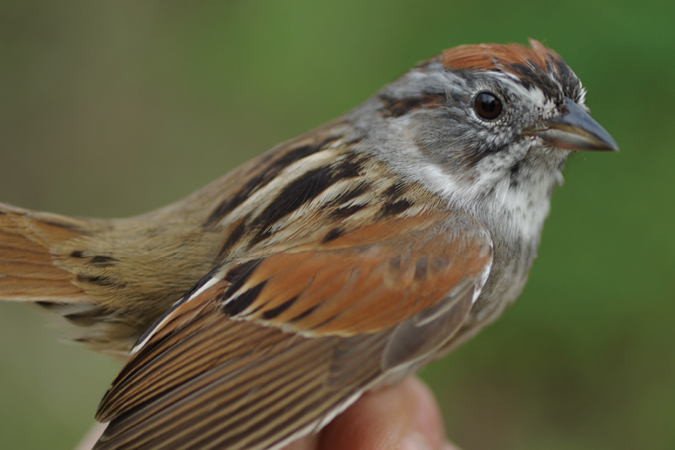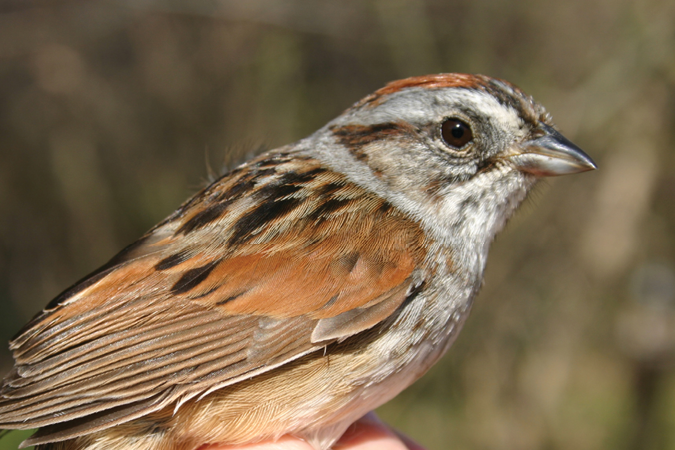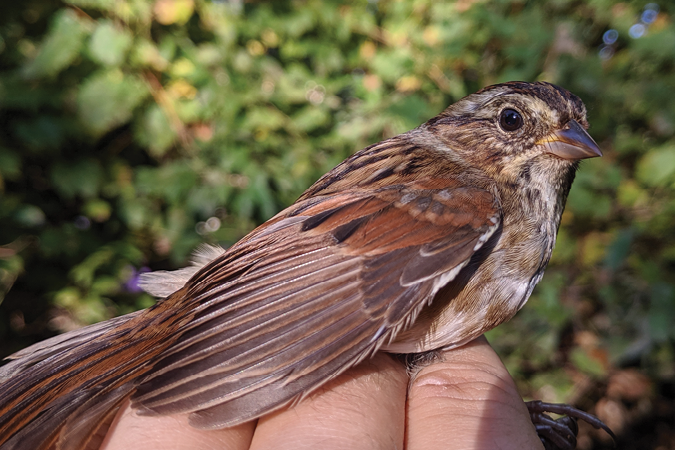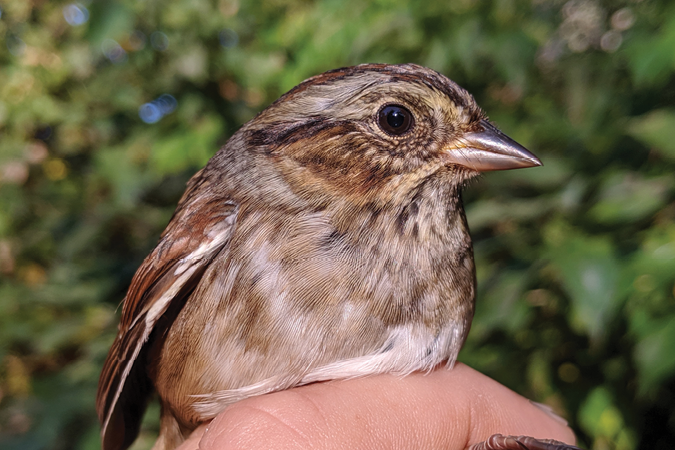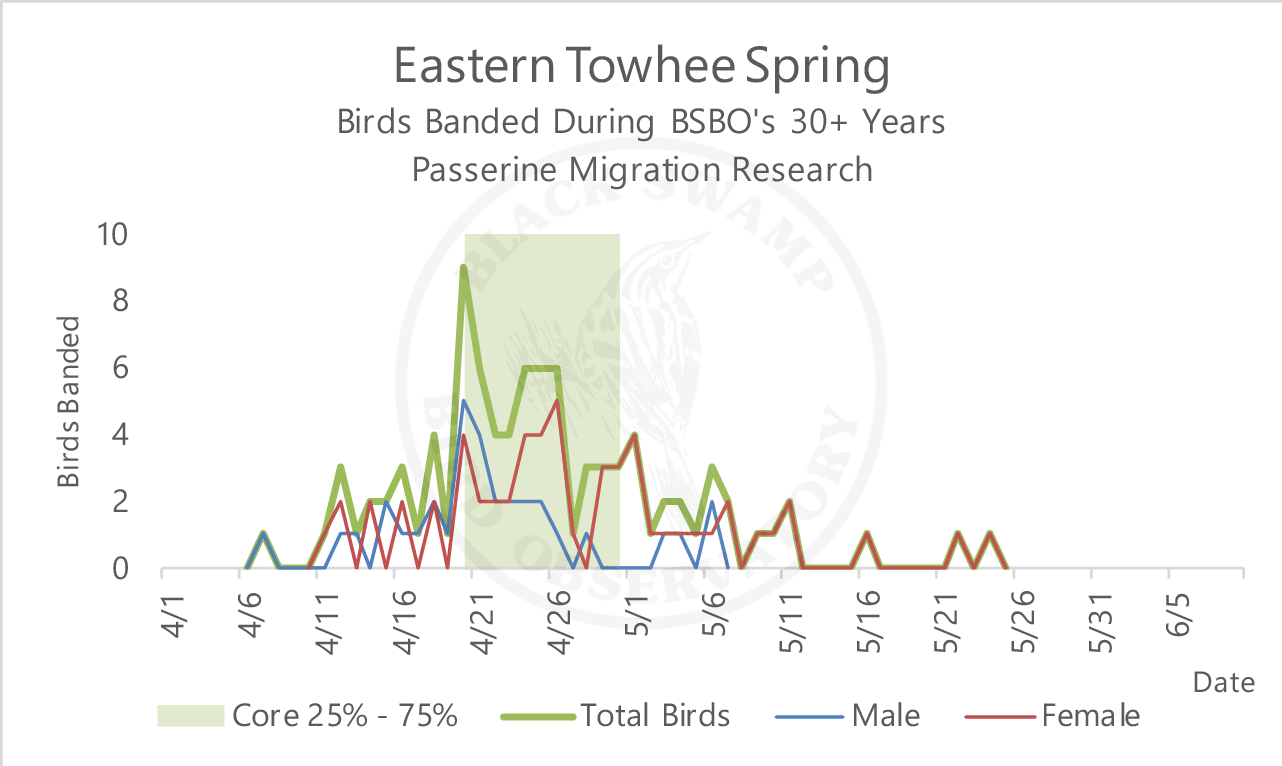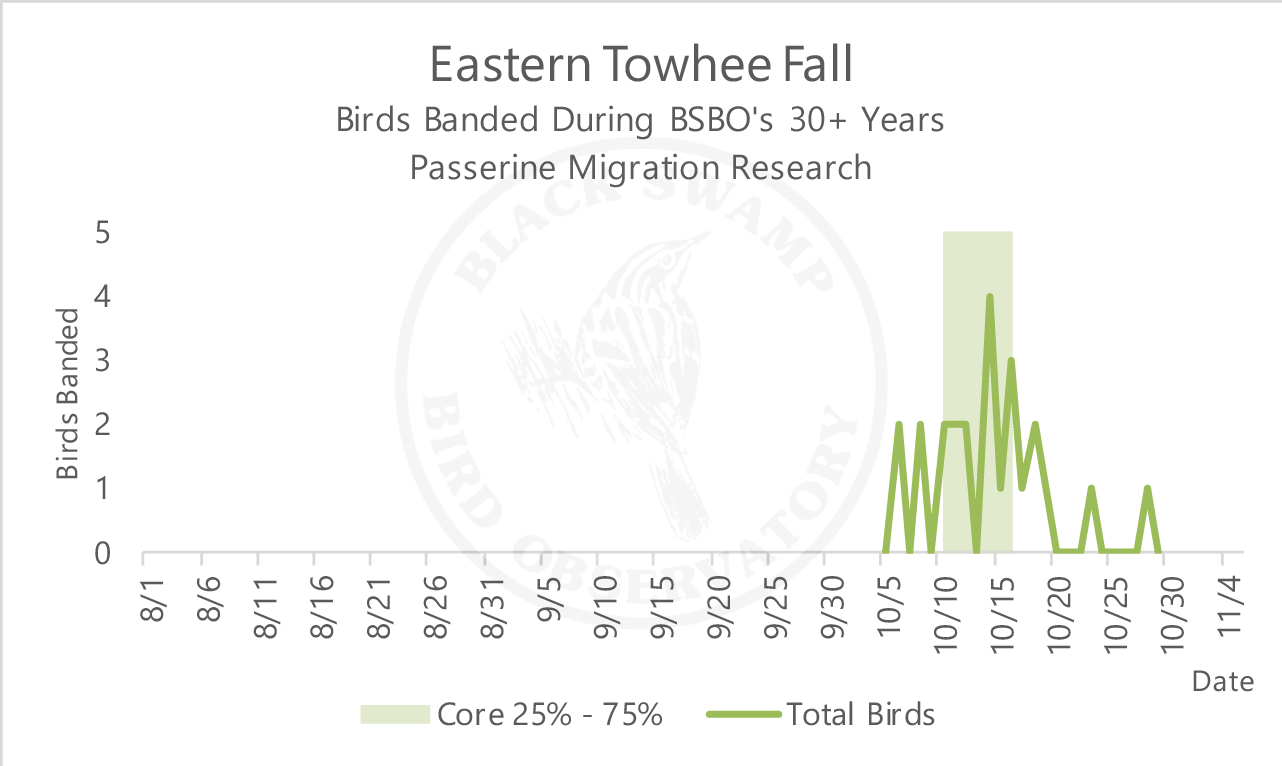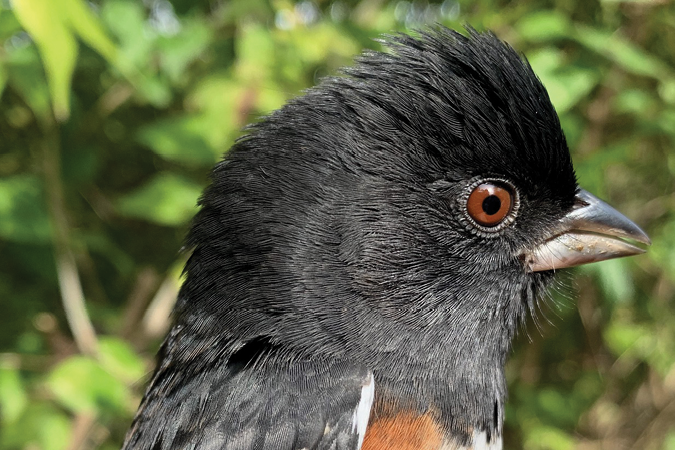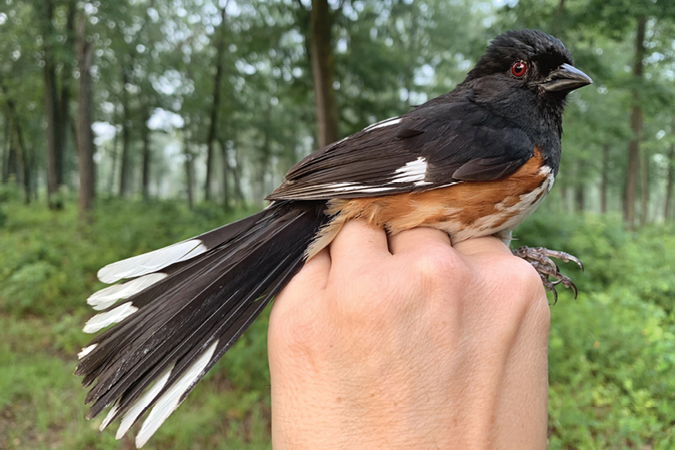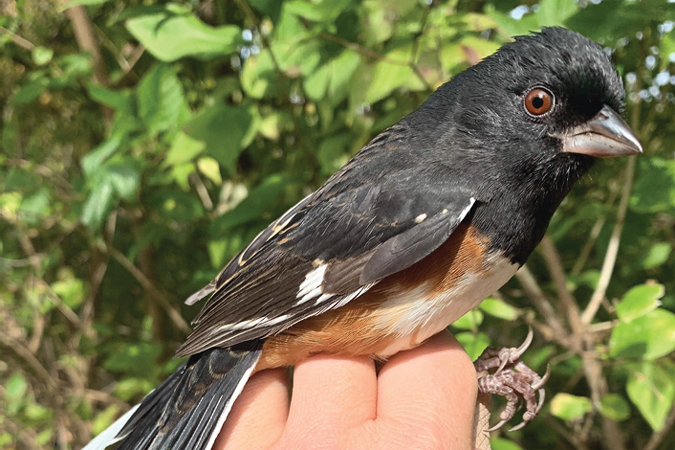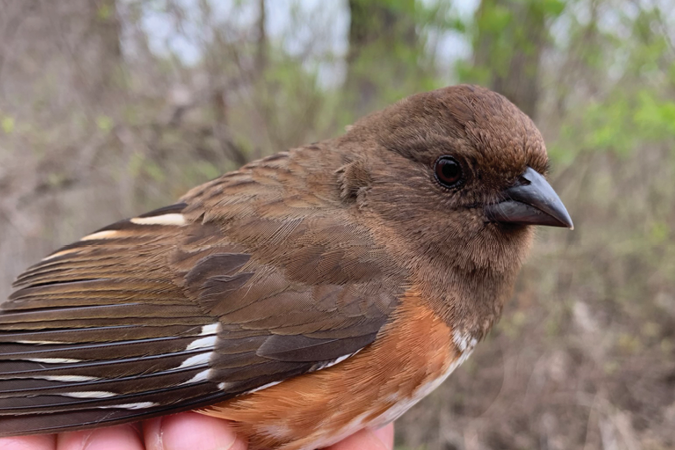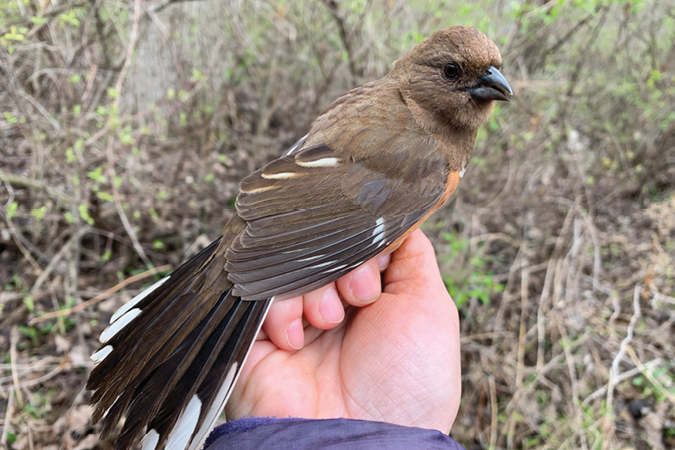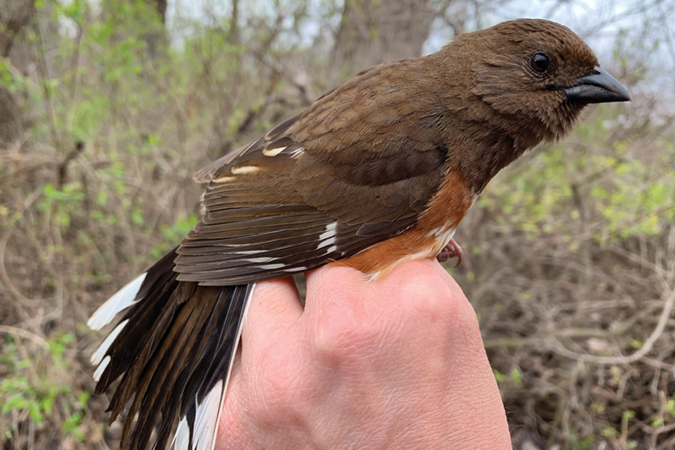Finches Fringillidae
about finches in nw ohio
The Finches are a colorful group of resident and nomadic seed-eaters of forest, backyard, shrub, and open habitats. They are hardy and excel in northern climes. Several species, including the redpolls and crossbills, may “irrupt” into our area periodically in winter out of the boreal forests to our north. In recent decades, climate change and population declines have been implicated in fewer of these significant irruptions into our area. Pine Siskin and Purple Finch are the most commonly encountered irruptive species, typically appearing each year during late fall, throughout winter, and early spring. American Goldfinch is a partial migrant, with some birds staying throughout the winter in our area. They are also one of our latest nesting species due to their reliance on seeds and fruits for raising their young. Because these species specialize in consuming seed, they are prominent visitors of backyard bird feeders and can be highly observable.
Purple Finch Haemorhous purpureus
|
Alpha Code: PUFI Spanish: Pinzón Morado French: Roselin pourpré Band Size: 1 ~ 1B NW Ohio Status: Migrant Total Banded in Spring: 46 Average Banded in Spring: 2 Total Banded in Fall: 347 Average Banded in Fall: 12 |
Song: quick, musical warble
Description: Adult male wine-red throughout most of back, head, throat, breast, and wings, with white belly. Adult female and young birds mostly brown throughout with brown streaks on white breast; well defined facial pattern with brown mask bordered by white. Some young males may show hints of red by spring. Spring Migration Timing: Sporadic and dependent on distance of winter dispersal and movements in late winter. Peak movements of PUFI still migrating in spring tend to occur in late April and the first few days of May. |
Fall Migration Timing: Later migrant with initial appearances in mid-August, increasing by mid-October with highest peak occurring
October 15-21. Migration Habitat: Found in a variety of wooded and semi-open areas including forests, backyards, swamps, and scrubby fields; will often come to backyard feeders. |
American Goldfinch Spinus tristis
|
Alpha Code: AMGO Spanish: Dominico Americano French: Chardonneret jaune Band Size: 0 ~ 0A NW Ohio Status: Present All Year Total Banded in Spring: 1,727 Average Banded in Spring: 58 Total Banded in Fall: 563 Average Banded in Fall: 19 |
Song: variable twitters and warbles, accompanied by a bright potato-chip
Spring Description: Male bright yellow throughout face, back, and underparts; black cap, wings, and tail. Orange bill. Female tan-yellow throughout with dusky-black to brown-black wings and tail; lacking cap. Spring Migration Timing: Second wave, with peak movement of birds occurring May 8-20. |
Fall Description: Males tannish above with light tan underparts; pale yellow face; black wings and tail. Blackish bill. Females tannish above with light tan underparts; somewhat pale yellow face; dusky-black to brown-black wings and tail.
Fall Migration Timing: Very protracted as local and resident birds move around the landscape August through October. Peaks toward the end of October suggests migrant birds or flocks preparing for winter dispersal. Migration Habitat: Variety of wooded and open areas (typically within range of forest vegetation) including forest edges, scrub-shrub, and backyards; common visitor to backyard feeders. Notes: As a late nester and seed-eater, AMGO fall migration activities extend past the banding season and typically occur in open field habitats where seed is plentiful. |
Sparrows Passerellidae
about sparrows in nw ohio
Sparrows are one of our most diverse families, featuring species that are cryptically colored and well-adapted for life on and near the ground. There is no habitat in our region that does not have at least one species of sparrow that is prominent in the landscape, from urban and suburban areas to grasslands, wastelands, forests, and wetlands. While the overall tendency of beginning birders is to think of sparrows as “those brown and streaky, hard-to-see birds,” with careful observation and patience these birds can give incredible studies and are strikingly beautiful, being laden with earth tones of bark, soil, leaves, and grasses. Most species do not show dimorphism between the sexes with the exception of Eastern Towhee and (Slate-colored) Dark-eyed Junco.
Sparrows are resident to medium-distance migrants and comprise a large portion of the movement of songbirds during the early part of spring migration and the latter portion of fall migration. Many species show distinct bimodal peaks in their migration timing, correlating with sex-related timing differences in spring and age-related differences in fall. In our region, White-throated Sparrow is one of the most abundant migrants.
Sparrows are resident to medium-distance migrants and comprise a large portion of the movement of songbirds during the early part of spring migration and the latter portion of fall migration. Many species show distinct bimodal peaks in their migration timing, correlating with sex-related timing differences in spring and age-related differences in fall. In our region, White-throated Sparrow is one of the most abundant migrants.
Chipping Sparrow Spizella passerina
|
Alpha Code: CHSP Spanish: Gorrión de Ceja Blanca French: Bruant familier Band Size: 0 ~ 0A NW Ohio Status: Migrant, Breeding, Winter-rare Total Banded in Spring: 117 Average Banded in Spring: 4 Total Banded in Fall: 29 Average Banded in Fall: 1 |
Song: long, dry trill of evenly spaced notes
Spring Description: Brown above with gray-white underparts. Grayish face with black eyeline, white eyebrow, and rufous crown. Black bill. Male and female alike. Spring Migration Timing: First wave, with birds first arriving in early April and peak of total movement occurring April 25 through May 6. |
Fall Description: Brown above with tan-gray underparts. Face pattern similar to spring, but face is tan with a thin black eyeline, tan eyebrow, and pale rufous crown streaked with tan. Pinkish to black bill. Male and female alike.
Fall Migration Timing: Concentrated in late September and early October, with peak movements occurring September 30 through October 13. Migration Habitat: Commonly found a variety of forest habitats including open woods, orchards, urban parks, neighborhoods, and backyards. Notes: While a common and ubiquitous species, CHSP use the Lake Erie beach ridges sparingly, preferring to stay farther inland. |
Field Sparrow Spizella pusilla
|
Alpha Code: FISP Spanish: Gorrión Llanero French: Bruant des champs Band Size: 0 ~ 0A NW Ohio Status: Migrant, Breeding, Winter-rare Total Banded in Spring: 298 Average Banded in Spring: 10 Total Banded in Fall: 75 Average Banded in Fall: 3 |
Song: accelerating short whistles, building up to a trill
Description: Brown above with tan-gray underparts. Gray face with rufous crown and eyeline/eye-triangle. Thin, white eyering. Pink-orange bill. Male and female alike throughout the year. Spring Migration Timing: First wave, with birds first arriving in late March and early April and the peak movement of total birds occurring April 18 through May 2. |
Fall Migration Timing: Late and condensed with movements picking up by October and extending into November, and peak movements occurring October 11-21.
Migration Habitat: Open areas with brush and shrub-scrub, hedgerows, forest edges, sometimes grassy fields with scattered shrub, and occasionally backyard feeders. Notes: Being in close proximity to the “permanent” range of FISP, many birds may not depart from the NW Ohio region until very late into fall or early winter. |
Fox Sparrow Passerella iliaca
|
Alpha Code: FOSP Spanish: Gorrión Rascador French: Bruant fauve Band Size: 1A ~ 1B NW Ohio Status: Migrant, Winter-uncommon Total Banded in Spring: 515 Average Banded in Spring: 17 Total Banded in Fall: 387 Average Banded in Fall: 13 |
Song: rich, clear introductory notes followed by several short trills
Description: A large sparrow. Reddish-brown above with reddish streaks and chevrons on white underparts. Face and crown reddish, divided by gray eyebrow. Mostly yellow bill. Male and female alike throughout the year. Spring Migration Timing: Early, rarely lingering past April. Movement actually begins in March, with peak activity in April occurring 10-17. |
Fall Migration Timing: Late, with activity extending from late September into November, and peak movements occurring October 13-25.
Migration Habitat: Ground scratcher of brushy clearings, forest undergrowth, parks, and well-vegetated backyards. Notes: Large movements of FOSP actually occur prior to the spring banding season and after the fall banding season; peaks in spring are actually a continuation from March, and those in fall extend well into November. Numerous FOSP subspecies exist, with the “red” subspecies passing through much of the east including Ohio. |
(Slate-colored) Dark-eyed Junco Junco hyemalis hyemalis
|
Alpha Code: SCJU Spanish: Junco Color Pizarra French: Junco ardoisé Band Size: 0 ~ 1 NW Ohio Status: Migrant, Winter Total Banded in Spring: 505 Average Banded in Spring: 17 Total Banded in Fall: 838 Average Banded in Fall: 29 |
Song: ringing, metallic trill (similar to CHSP and PIWA)
Description: Light pink bill. White underparts. Adult male dark gray-black above extending to breast. Adult female and younger males gray to dark gray above extending to breast and intermixed with brown. Younger females gray above extending to breast, with a moderate amount of brown intermixed. Spring Migration Timing: Early, rarely lingering past April. Movement actually begins in March, with peak activity in April occurring 14-21. |
Fall Migration Timing: Late, with activity picking up in late September and extending into November. Peak movement of total birds occurring October 10-23.
Migration Habitat: Semi-open habitats including brushy clearings, forest edges, roadsides, and backyards. Notes: Large movements of SCJU actually occur prior to the spring banding season and after the fall banding season; peaks in spring are actually a continuation from March, and those in fall extend well into November. |
(Eastern) White-crowned Sparrow Zonotrichia leucophrys leucophrys
|
Alpha Code: EWCS Spanish: Gorrión de Corona Blanca Oriental French: Bruant à couronne blanche (race de l’est) Band Size: 1B NW Ohio Status: Migrant, Winter-uncommon Total Banded in Spring: 1,436 Average Banded in Spring: 48 Total Banded in Fall: 284 Average Banded in Fall: 10 |
Song: series of sweet whistled notes followed by buzzy notes or a trill
Spring Description: Brown above with gray underparts. Gray face with black eyeline extending past eye, white eyebrow, black crown stripe, and white central crown stripe. Pink-orange bill. Male and female alike. Spring Migration Timing: Second wave, with activity picking up in late April, and the peak of total birds occurring May 7-15. |
Fall Description: Adult birds same as spring. Young male and female brown above with gray underparts; tan-gray face with dusky eyeline extending past eye, tan-white eyebrow, coppery crown stripe, and pale cream-gold central crown stripe; pink-orange bill.
Fall Migration Timing: Late, with activity picking up by late September and extending into November. Peak movement of total birds occurring October 9-18. Migration Habitat: Mostly open habitats including brushy clearings, brushy fields, forest edges, roadsides, and backyards. Notes: Tends to be more common farther inland away from Lake Erie shore. |
(Gambel's) White-crowned Sparrow Zonotrichia leucophrys gambelii
|
Alpha Code: GWCS Spanish: Gorrión de Corona Blanca de Gambel French: Bruant à couronne blanche (race de Gambel) Band Size: 1B NW Ohio Status: Migrant-rare Total Banded in Spring: 25 Average Banded in Spring: <1 Total Banded in Fall: 4 Average Banded in Fall: <1 |
Song: series of sweet whistled notes followed by buzzy notes or a trill
Spring Description: Brown above with gray underparts. Gray face with black eyeline not extending past eye, white eyebrow, black crown stripe, and white central crown stripe. Yellow-orange bill. Male and female alike. Spring Migration Timing: Appearances primarily occur in May, with peak occurrences May 7-14. |
Fall Description: Adult birds same as spring. Young male and female brown above with gray underparts; tan-gray face with dusky eyeline not extending past eye, tan-white eyebrow, coppery crown stripe, and pale cream-gold central crown stripe; yellow-orange bill.
Fall Migration Timing: Insufficient data to graph. Migration Habitat: Mostly open habitats including brushy clearings, brushy fields, forest edges, roadsides, and backyards. Notes: GWCS primarily winter west of the Mississippi River, however, vagrants do occur during spring migration in Ohio, but rarely in fall. |
White-throated Sparrow Zonotrichia albicollis
|
Alpha Code: WTSP Spanish: Gorrión de Garganta Blanca French: Bruant à gorge blanche Band Size: 1B NW Ohio Status: Migrant, Winter Total Banded in Spring: 15,091 Average Banded in Spring: 503 Total Banded in Fall: 9,980 Average Banded in Fall: 344 |
Song: thin, clear whistle Oh-Sweet-Canada-Canada-Canada
Description: Brown above with gray-white underparts. White morph with white throat and gray face with black eyeline, white eyebrow, yellow lores, black crown stripe and white central crown stripe. Tan morph with whitish throat and gray-tan face with brownish eyeline, tan eyebrow, dusky yellow lores, brownish crown stripe, and tannish central crown stripe. Male and female alike throughout the year. Spring Migration Timing: First into second wave, with activity picking up by mid-April and extending into mid-May. Peak movement of total birds occurring April 28 through May 8. |
Fall Migration Timing: Late, with activity picking up by late September and extending into November. High, peak movement of total birds occurring October 5-15.
Migration Habitat: Dense ground vegetation including forest undergrowth and edges, thickets, roadsides, urban parks, and backyards. Notes: The white morph and tan morph are genetically determined and not an indication of sex or age. |
Song Sparrow Melospiza melodia
|
Alpha Code: SOSP Spanish: Gorrión Cantor French: Bruant chanteur Band Size: 1B ~ 1 NW Ohio Status: Present All Year Total Banded in Spring: 1,430 Average Banded in Spring: 48 Total Banded in Fall: 1,531 Average Banded in Fall: 53 |
Song: variable, with short, clear introductory notes followed by a mix of buzzes, trills, and jumbled whistles
Description: Russet-brown above with coarse, dark brown streaks converging into a breast spot on white underparts. Face mostly gray and well-striped with a broad, brown malar stripe, eyeline, and crown stripe. Male and female alike throughout the year. Spring Migration Timing: First wave, with activity actually beginning in March and peak numbers occurring April 11-21. |
Fall Migration Timing: Extensive, with movement occurring from August into November. Initial activity in August primarily from local area birds, with peak migrants and pre-winter dispersal occurring October 5-15.
Migration Habitat: Wide variety of semi-open areas including forest and marsh edges, roadsides, brushy fields and clearings, urban parks, and backyards. |
Lincoln's Sparrow Melospiza lincolnii
|
Alpha Code: LISP Spanish: Gorrión de Lincoln French: Bruant de Lincoln Band Size: 1 ~ 0 NW Ohio Status: Mirgant Total Banded in Spring: 2,906 Average Banded in Spring: 97 Total Banded in Fall: 338 Average Banded in Fall: 12 |
Song: rich, wren-like series of rising trills, gurgles, and buzzes, with an abrupt end
Description: Brown above with crisp black streaks on white underparts. Buffy wash across breast. Face gray with thin brown eyeline, gray eyebrow, brownish crown stripe with thin black streaks, and gray central crown stripe. Male and female alike throughout the year. Spring Migration Timing: Second wave, with birds first appearing in late April and peak movement of total birds occurring May 8-20. |
Fall Migration Timing: Earlier and more condensed than other sparrows, with activity extending from early September into late October, and peak movement of total birds occurring September 23 through October 9.
Migration Habitat: Dense vegetation of shrub-scrub, brushy fields, forest undergrowth, and occasionally backyards. |
Swamp Sparrow Melospiza georgiana
|
Alpha Code: SWSP Spanish: Gorrión Pantanero French: Bruant des marais Band Size: 1 ~ 0 NW Ohio Status: Present All Year Total Banded in Spring: 5,378 Average Banded in Spring: 179 Total Banded in Fall: 1,866 Average Banded in Fall: 64 |
Song: liquid, musical trill, all of the same note
Spring Description: Reddish-brown above with gray-white underparts and whitish throat. Face with tannish cheek, brown eyeline, gray-white eyebrow, red-brown crown stripe, and gray central crown stripe. Male and female alike throughout the year. Spring Migration Timing: First into second wave, with activity heightening by mid-April and peak movements of birds occurring April 26 through May 12. |
Fall Description: Patterning same as spring, but whites and grays subdued and tanner.
Fall Migration Timing: Late and condensed, with activity rising by late September and peak movement of total birds occurring October 7-16. Migration Habitat: Dense vegetation in marshes, along streamside thickets, and wet brushy fields. |
Eastern Towhee Pipilo erythrophthalmus
|
Alpha Code: EATO Spanish: Rascador de Ojo Rojo French: Tohi à flancs roux Band Size: 1 ~ 0 NW Ohio Status: Migrant, Breeding Total Banded in Spring: 104 Average Banded in Spring: 3 Total Banded in Fall: 29 Average Banded in Fall: 1 |
Song: loud whistled drink-your-tea! with the last note trilled
Description: Male black above including head and throat, with white underparts and rufous sides. Female chocolate brown above including head and throat, with white underparts and rufous sides. Red eyes. Spring Migration Timing: First wave, with birds initially moving in late March and early April, and peak movements occurring April 21-30. |
Fall Migration Timing: Late, with birds mostly moving in October and peak movements occurring October 10-15.
Habitat: Brushy undergrowth of open woods and edges, dense scrub-shrub adjacent to forests, and occasionally backyards. |
